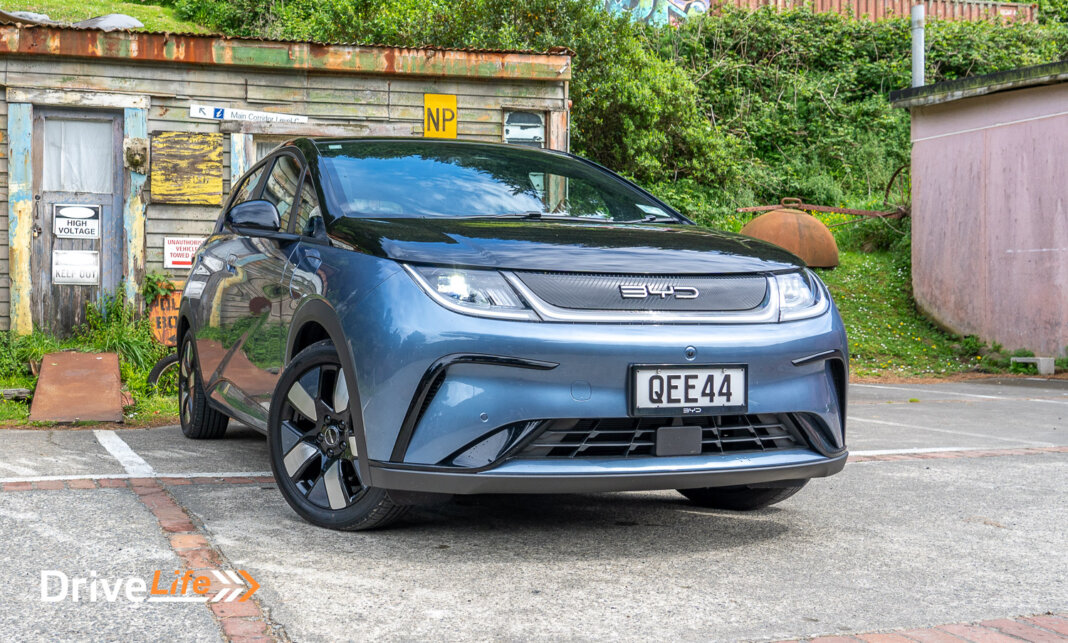The BYD Dolphin arrived in New Zealand with quite a big bang; overseas reports of the model meant it came with high expectations.
With BYD’s blade battery technology, sharp pricing and decent range, it feels like the Dolphin should make huge waves in the New Zealand market. And that’s not just in the EV segment. While many – DriveLife included – instantly compare the Dolphin to the MG4, BYD New Zealand told us that in their view, their main competitor is in fact Toyota. No harm in setting your sights high, and with a claimed WLPT range of 427km and great value, the Dolphin could well draw buyers away from a Corolla or Yaris.
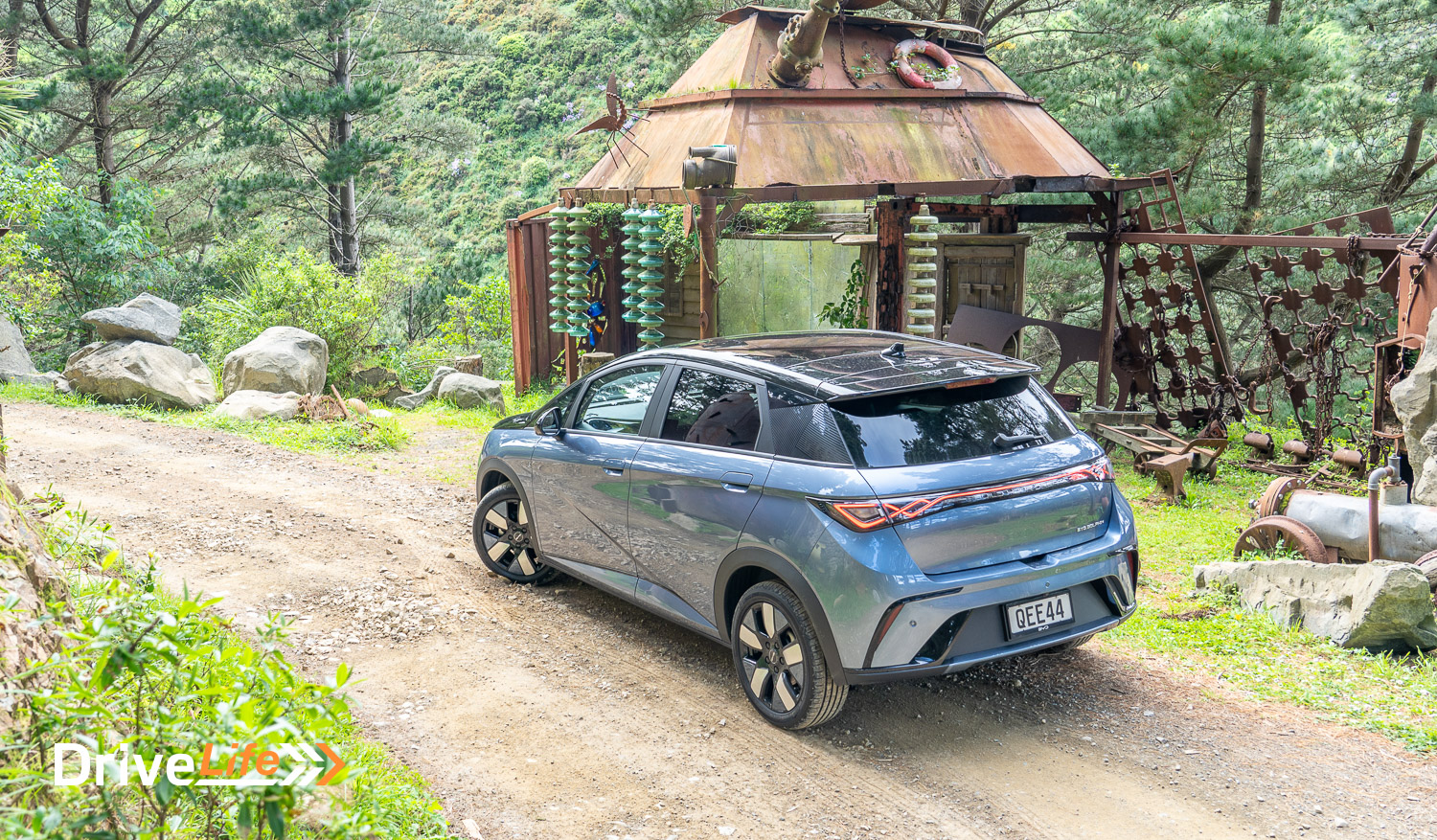
After all, they’re both 5-door hatchbacks or similar sizes. But while we applaud Toyota for dumping straight petrol models of Corolla and only selling hybrid versions, hybrid ain’t EV and Toyota’s first EV, the BZ4X, is priced in the high $70K area, far above the Dolphin – although the BZ4X is an SUV and a larger vehicle.
The reality is that many buyers will be comparing the MG4 and the Dolphin, and in a nice twist of events, I jumped straight out of the MG4 and into the Dolphin. How would the two compare?
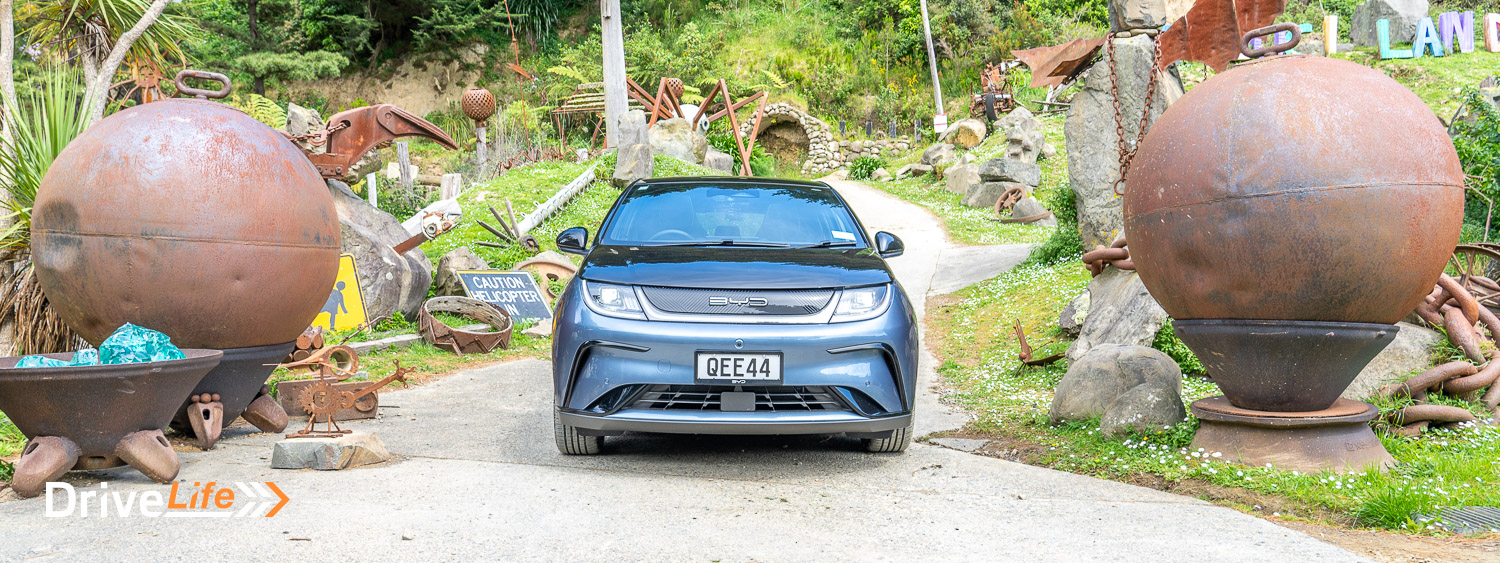
What We Like and Dislike About The 2023 BYD Dolphin Extended
| What we like | What we don’t like |
| Features Value Speedy infotainment overall Free wall charger (temporary offer) Tight turning circle Camera resolution and view selection Performance Road, tyre and wind noise well well-controlled | Lane Keep Assist Speed alert Low brake regeneration Some glitches in our test car |
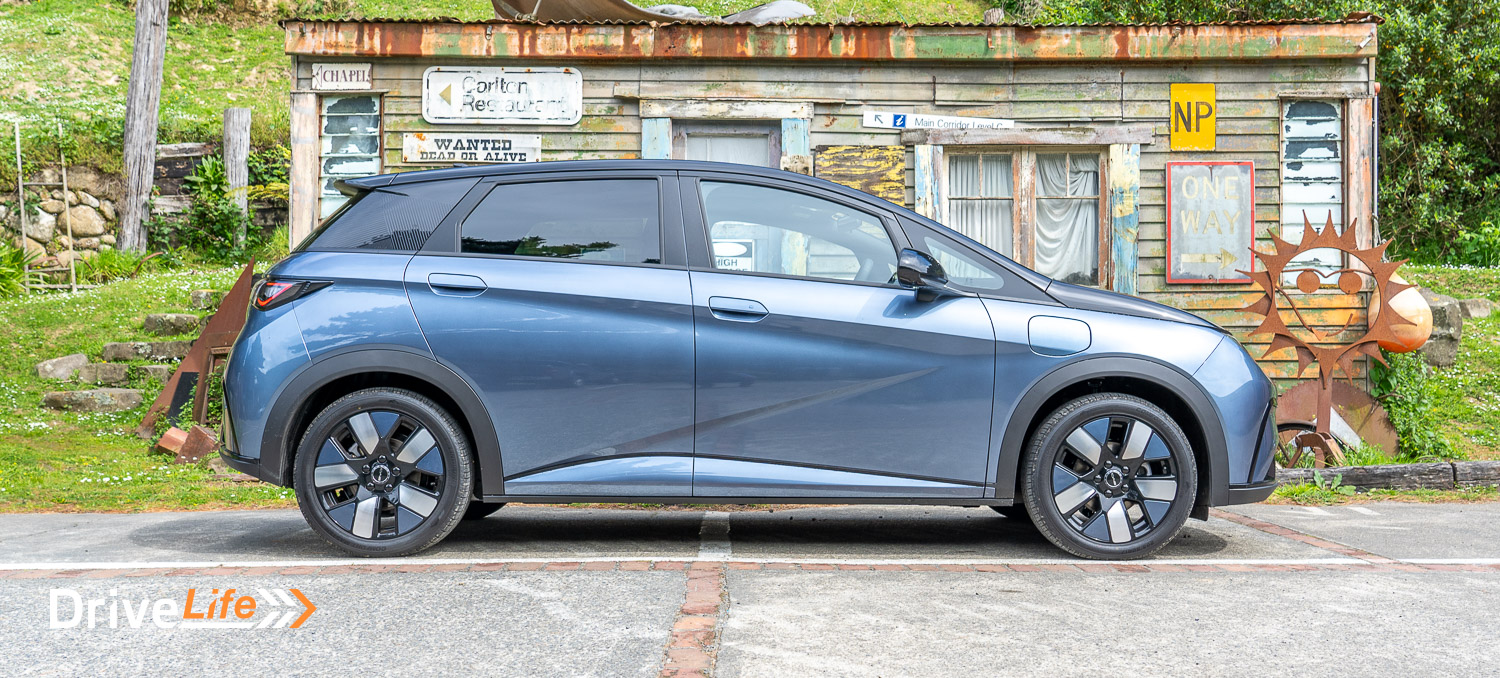
What’s In The 2023 BYD Dolphin Range?
New Zealand gets two models of Dolphin:
- Dolphin Standard $49,990
- Dolphin Extended $55,990
The only differences between the two models are battery pack sizes and electric engine power outputs. The Dolphin Standard has a 45kWh battery pack for a WLTP range of 340 km, while the Dolphin Extended (tested) has a 60kWh battery pack, for a suggested range of 427 km. Both models are front-wheel drive.
That different battery pack also means different power outputs, with the Standard model getting 70kW of power and 180Nm or torque, while the Extended version ups these to 150kW/310Nm. That’s a huge difference, and it’s probably well worth paying the $6,000 premium for the extra range and a whole lot more power and torque.
As a bonus, BYD is currently offering a free wall charger with all Dolphin and Atto3 models.
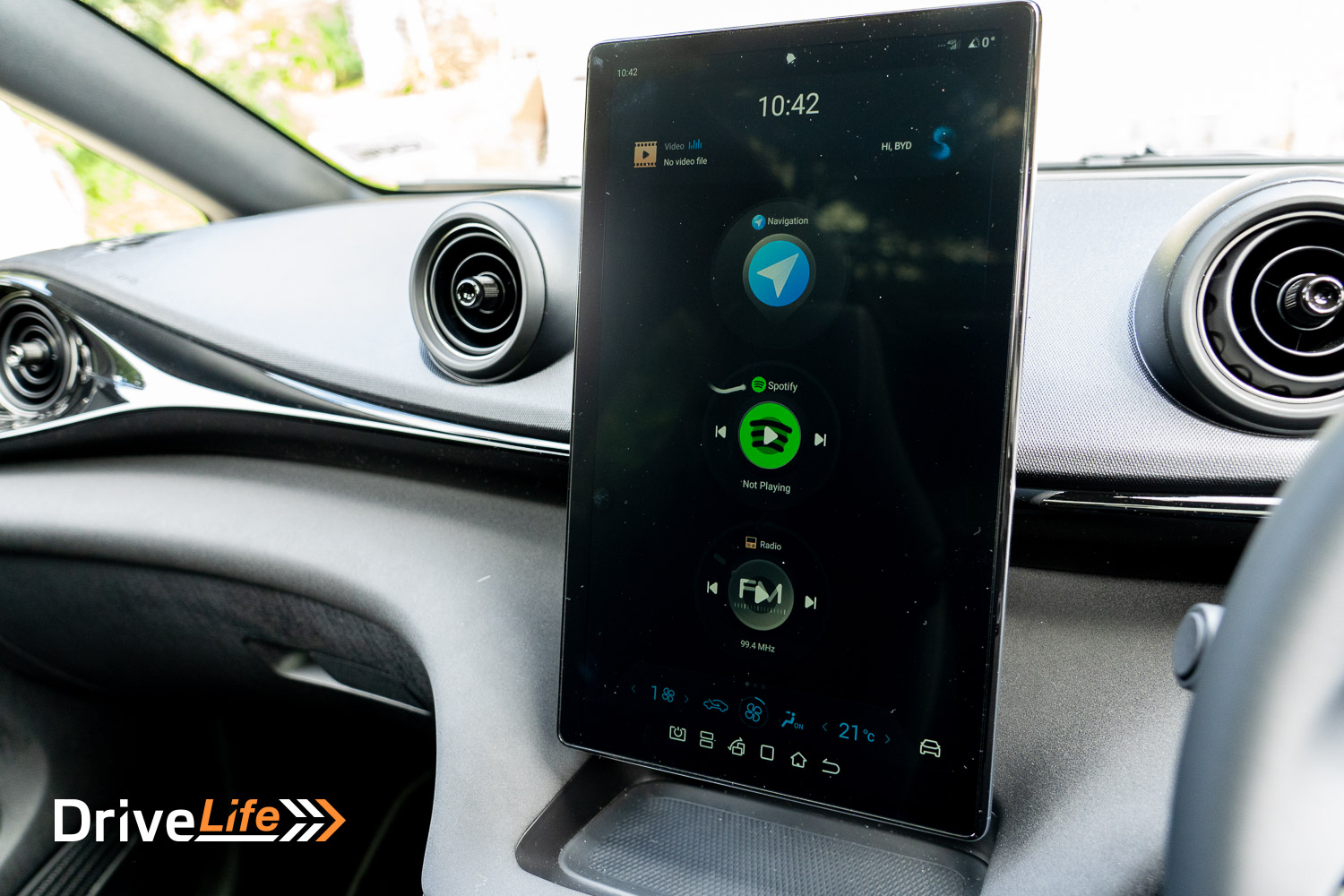
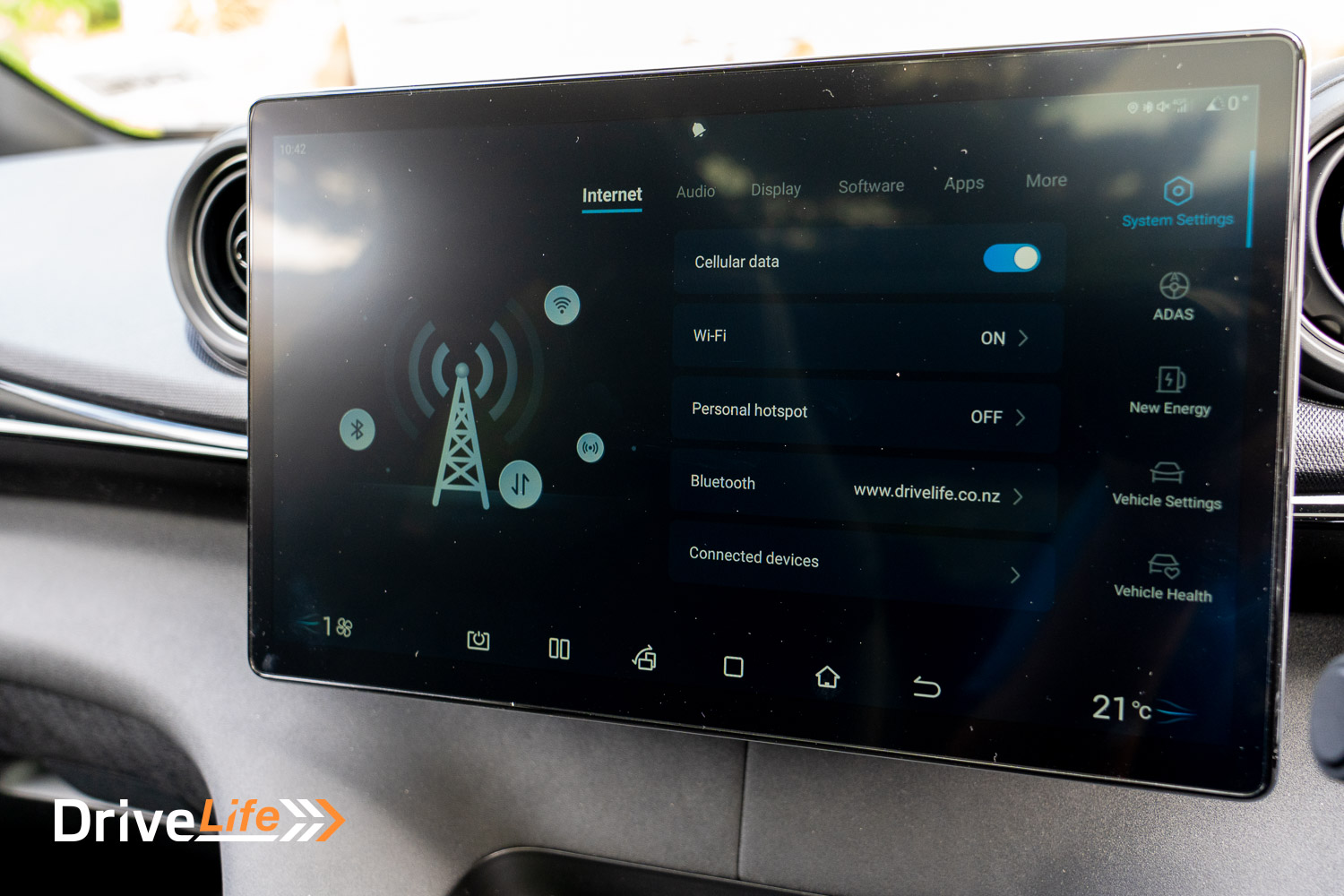
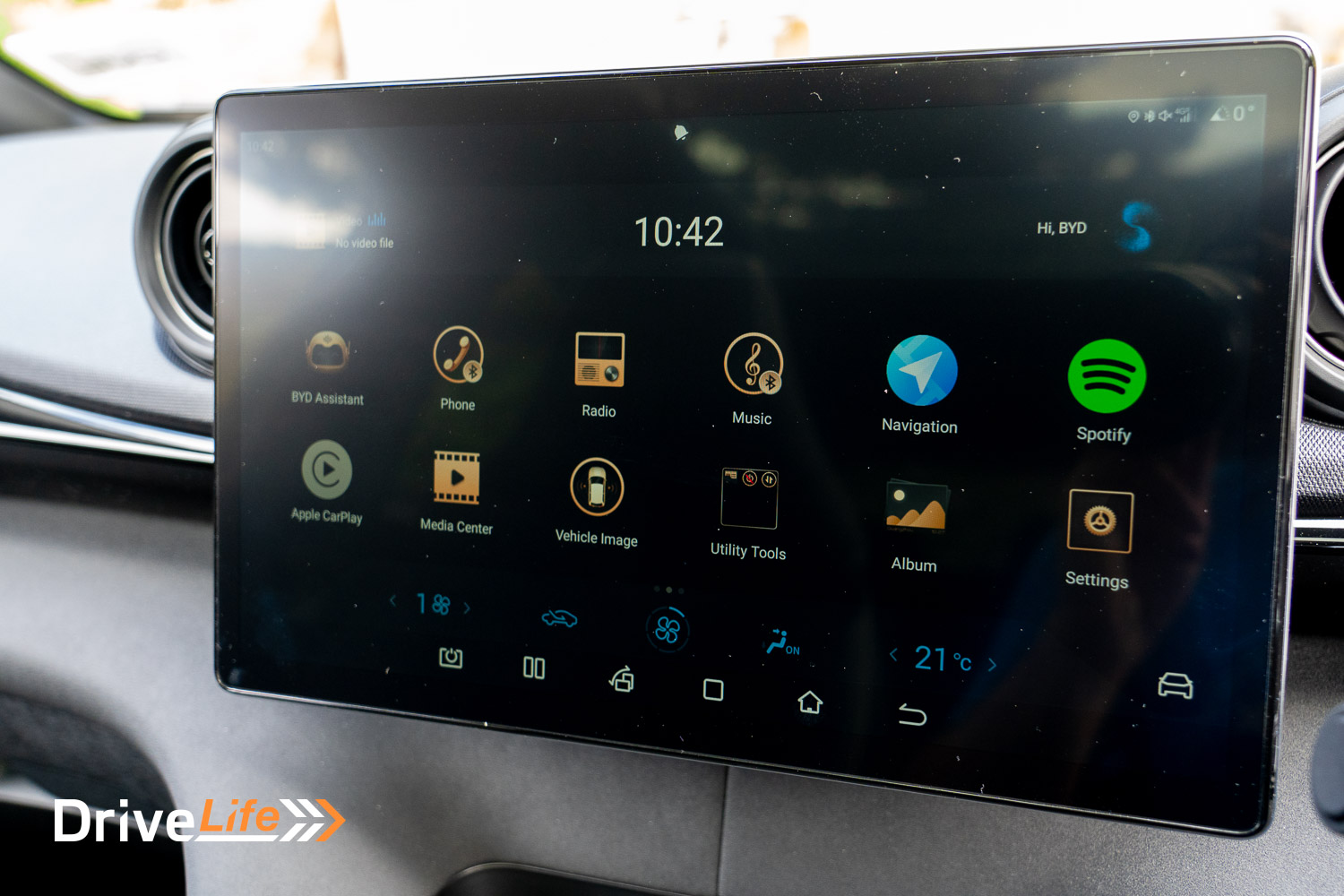
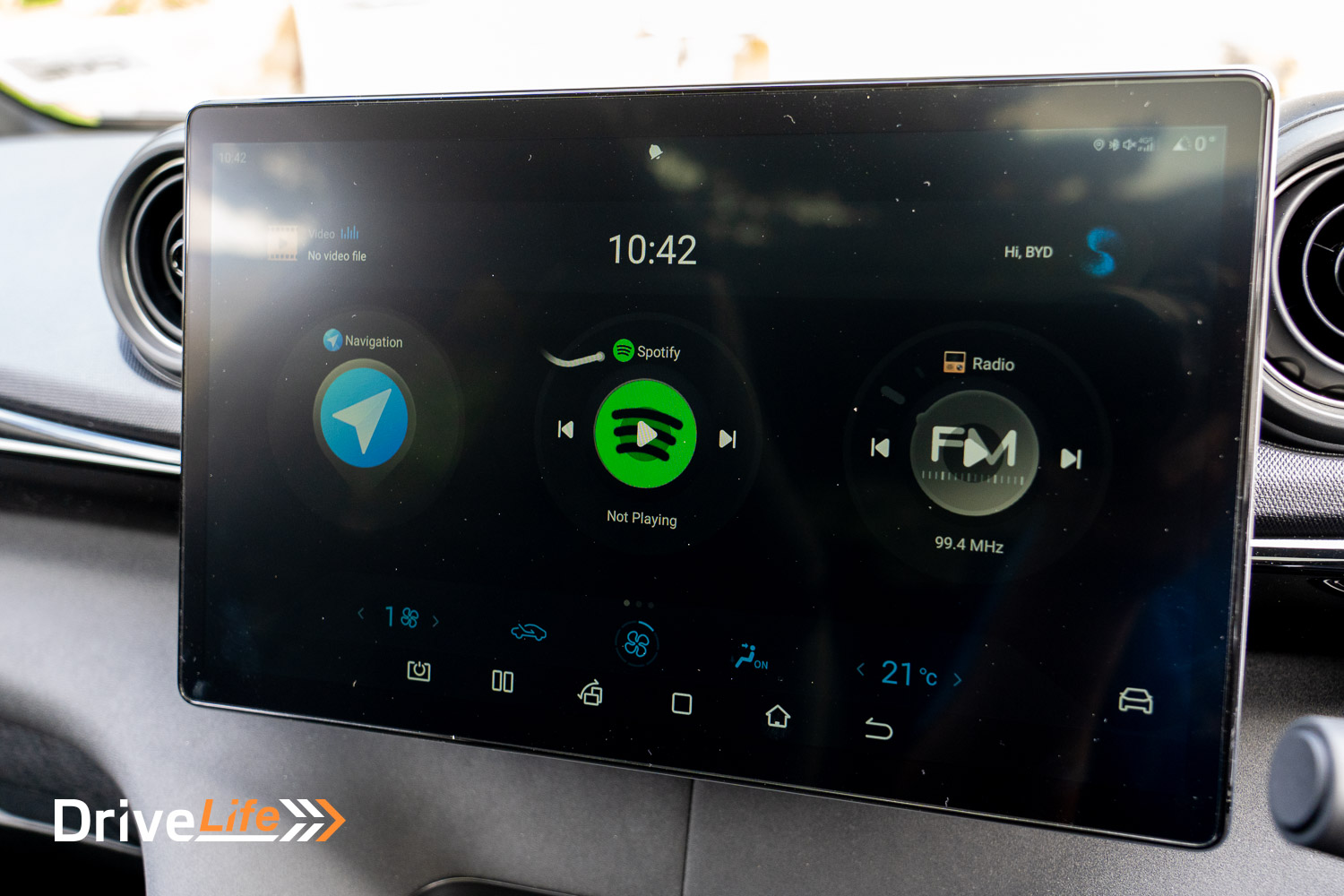
2023 BYD Dolphin Extended Standard Equipment Highlights
SAFETY AND SECURITY
- Front airbags – driver & front passenger
- Side airbags – driver & front passenger
- Side curtain airbags – front & rear
- Far-side airbags – driver & front passenger
- Tyre Pressure Monitoring System (TPMS)
- ISOFIX child restraint anchorage points (outer rear seats)
- Electric Parking Brake System (EPB)
- Electronic Brake Force Distribution (EBD)
- Driver Fatigue Monitoring (DFM)
- 360° view monitor
- Front 2 radars, Rear 3 radars
- Brake auto-hold
- Adaptive Cruise Control (ACC)
- Automatic Emergency Braking System (AEB)
- Front Collision Warning (FCW)
- Rear Collision Warning (RCW)
- Blind Spot Monitoring (BSD)
- Lane Departure Warning (LDW)
- Lane Keeping Support (LKS)
- Rear Cross Traffic Alert (RCTA)
- Rear Cross Traffic Brake (RCTB)
- Front Cross Traffic Alert (FCTA)
- Front Cross Traffic Brake (FCTB)
- Lane Departure Assist (LDA)
EXTERIOR
- Panoramic glass roof
- Front boneless wiper
- Electrically heated and adjustable exterior mirrors
- Electrically foldable exterior mirrors
INTERIOR
- Heated Front Seats
- Synthetic leather seat
- 60/40 split-fold rear seats
- 6-way power adjustment – driver seat
- 4-way power adjustment – front passenger seat
ENTERTAINMENT
- FM & DAB radio
- Bluetooth phone connectivity and audio streaming
- 12.8″ intelligent rotating touchscreen
- 6 speakers
- Apple CarPlay and Android Auto
- Satellite Navigation
LIGHTS
- LED headlights
- Follow me home headlight
- LED taillight bar
- LED daytime running light
- Adaptive Front Lights
- LED front reading light LED rear reading light
COMFORT AND CONVENIENCE
- Wireless phone charger
- Keyless entry & Keyless start, portable card key
- 4-door window one-touch up-down with anti-pinch
- Automatic single-zone air conditioner (heat pump)
- PM2.5 air filter
The above list looks pretty comprehensive – and it is. When you consider that the Standard Range Dolphin also has all these features, that’s an impressive list. In fact, BYD is keen to point out that if you compare the Standard Range Dolphin to the MG4 Excite (so the base model), the Dolphin is $3K more but has the following features that the MG4 does not:
- Heat pump AC
- Moon roof
- Heated front seats
- Electric front seats
- 360 camera system
- SatNav
- Blind Spot Detection
- Rear Cross Traffic Alert
- Voice Control
- NFC access
- Wireless phone charging
- V2L adaptor
- Wall Charger
In anyone’s language, that’s well over $3k worth of extra equipment that the cheapest Dolphin has over the cheapest MG4, and that’s not even the complete list.
Depending on what model you buy will also give you different choices in colour for your Dolphin. The Standard is available with:
- Sand White
- Maldive Purple
- Urban Grey
- Coral Pink
While the Extended is available in:
- Ski White
- Atlantis Grey
- Surf Blue
- Coral Pink
For a full list of specs and options available for the BYD Dolphin Extended, head on over to the BYD New Zealand’s website.
How Does The 2023 BYD Dolphin Extended Compare To Its Competition?
Since BYD NZ is keen to compare the Dolphin to a Toyota, I’ve included the Corolla here just for fun.
You can see the comparison between the Dolphin and MG4 is extremely close by the numbers – perhaps the decision is down to looks and equipment levels, but bear in mind the Dolphin is fitted with blade-style batteries.
For this comparison, I’ve stuck to any new EV hatchbacks under $60K (before any rebates). Of course, the Corolla is the outlier here, both not being an EV but also being the cheapest car in the table.
All prices below exclude the refund or additional cost of the New Zealand Clean Car Programme.
| Make/ Model | Battery Capacity kW-hr | Power/ Torque kW/Nm | 0-100km/h seconds | Range (WLTP) | Boot Space, litres | Price (excl CCP) |
| Nissan Leaf e+ 59kWh | 59 | 160/340 | 6.9 | 385 | 405 | $58,990 |
| Peugeot e-208 | 50 | 100/260 | 8.3 | 382 | 311 | $56,990 |
| Dolphin Extended | 60 | 150/310 | 7.0 | 427 | 345 | $55,990 |
| MG4 Essence 64 | 64 | 150/250 | 7.2 | 435 | 350 | $54,990 |
| Opel Corsa-e | 50 | 100/260 | 8.1 | 383 | 309 | $49,990 |
| GWM Ora Ultra Extended | 63 | 126/250 | 8.4 | 420 | 228 | $47,990 |
| Toyota Corolla ZR Hybrid | – | 103/142 | 9.4 | 500 (estimate) | 389 | $43,190 |
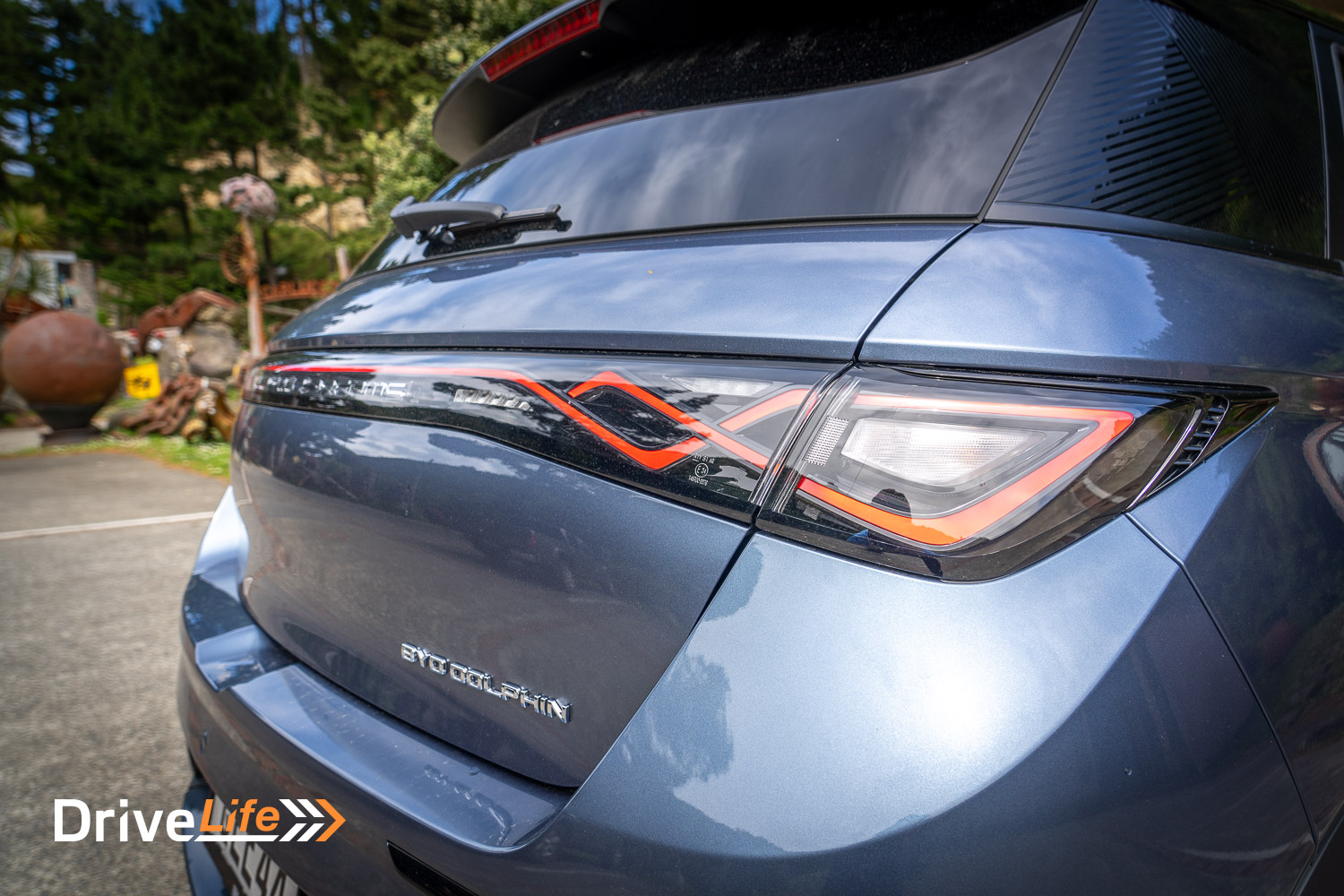
First Impressions Of The 2023 BYD Dolphin Extended
If you want to compare the MG4 to the Dolphin, then the design of each model is a good start – especially if that MG4 is finished in Volcano Orange. While the MG4 goes for the in-your-face design ethos, the Dolphin is much more subdued. As far as design goes, maybe we can consider the MG4 to be Bart Simpson and the Dolphin to be Lisa Simpson.
That’s not a bad thing and it’s all down to personal preference. I like both, and the Dolphin is certainly taking a conservative approach, while still looking good. The front reminds me of the BMW i3, and the rest is just fine.
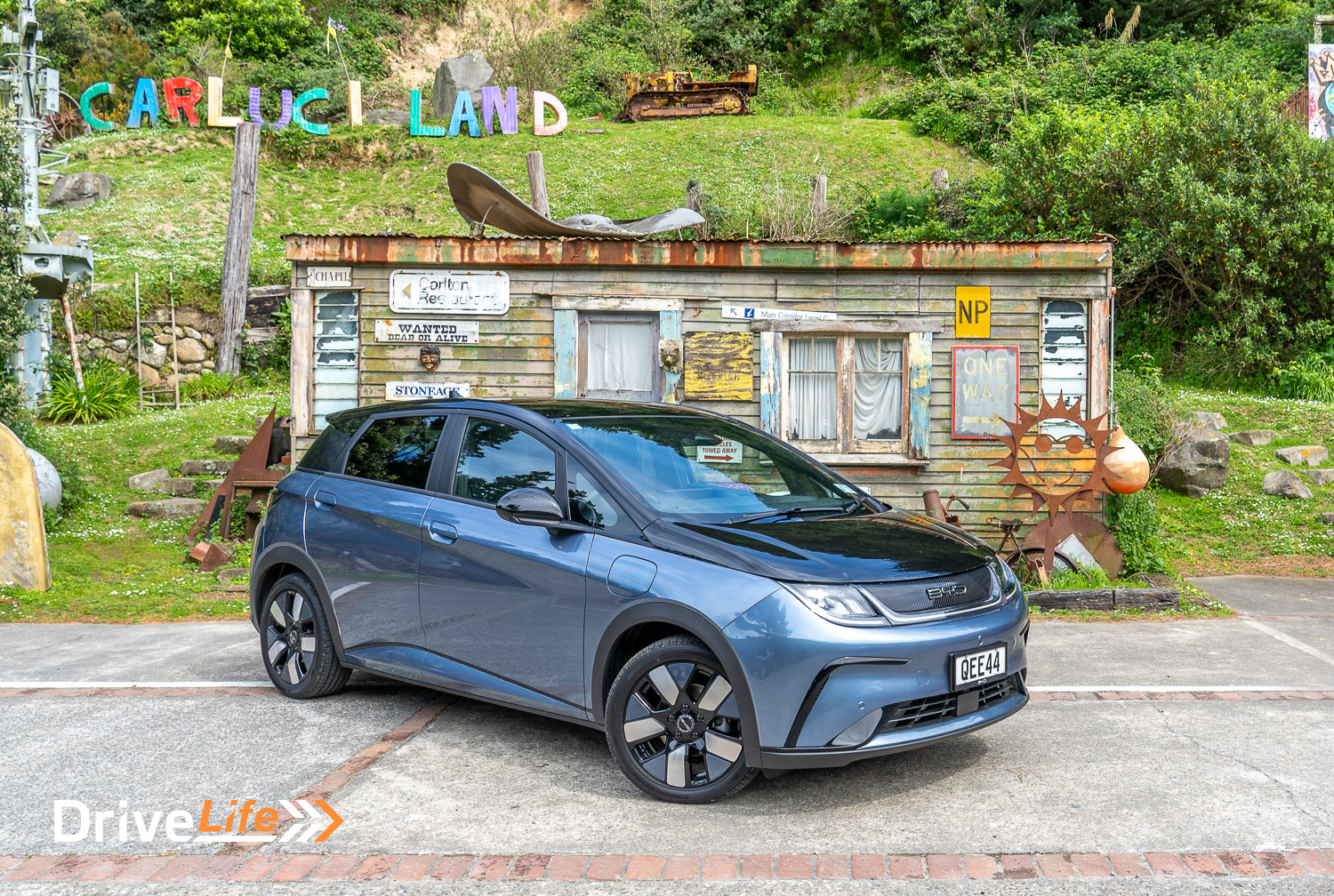
Our test car was finished in Atlantis Grey, which actually seemed blue, but it suited the Dolphin’s design. Like other Dolphin colours, the bonnet is finished in black paint, contrasting the rest of the car. Depending on your Dolphin’s colour, the bonnet will be either grey or black. This contrasting paint doesn’t stop at the bonnet – everything above the waistline of the car will be in black or grey. It can look unusual at certain angles, while other angles will give the car that floating-roof look. I have to applaud BYD for doing something that’s a little different here.
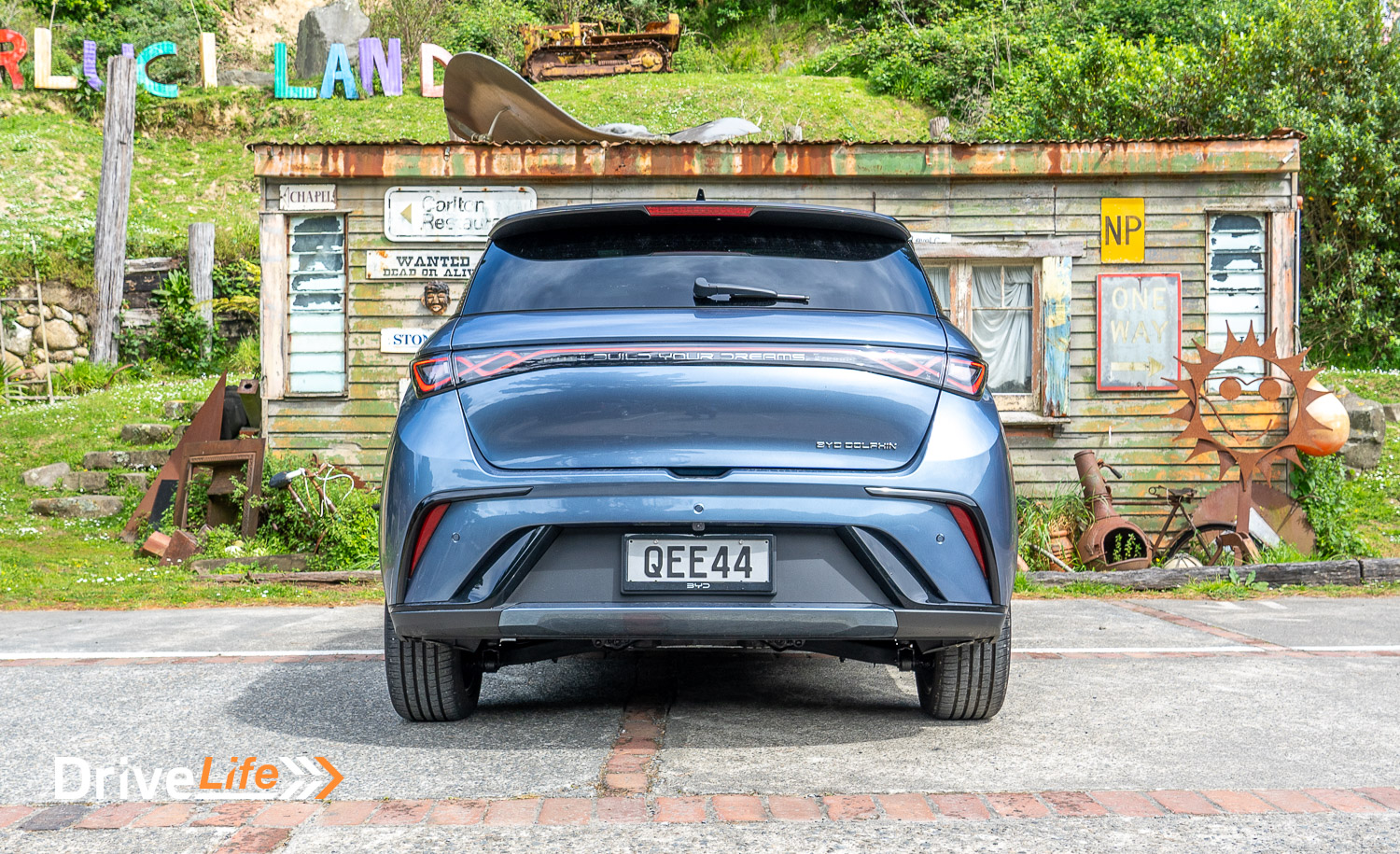
What’s The Interior Like In The 2023 BYD Dolphin Extended?
Unlike the Atto3 with its funky but initially confusing door handles, the Dolphin has toned down any funkiness in the interior. There are no banjo strings on the doors like in the Atto3, and everything else seems very grown up and ‘normal’.
The car is fitted with a huge fixed moonroof, with an electric cloth blind. As you’d expect, this lets in a lot of natural light and that’s really needed; like just about every other new car out there, the Dolphin’s interior is completely black. The Dolphin Standard does have some options here; black+brown, black+grey, and pink+grey. If you buy the Dolphin Extended your choices are black+grey, pink+grey, and blue+black. I’d love to see that blue interior, it looks amazing in the brochure.
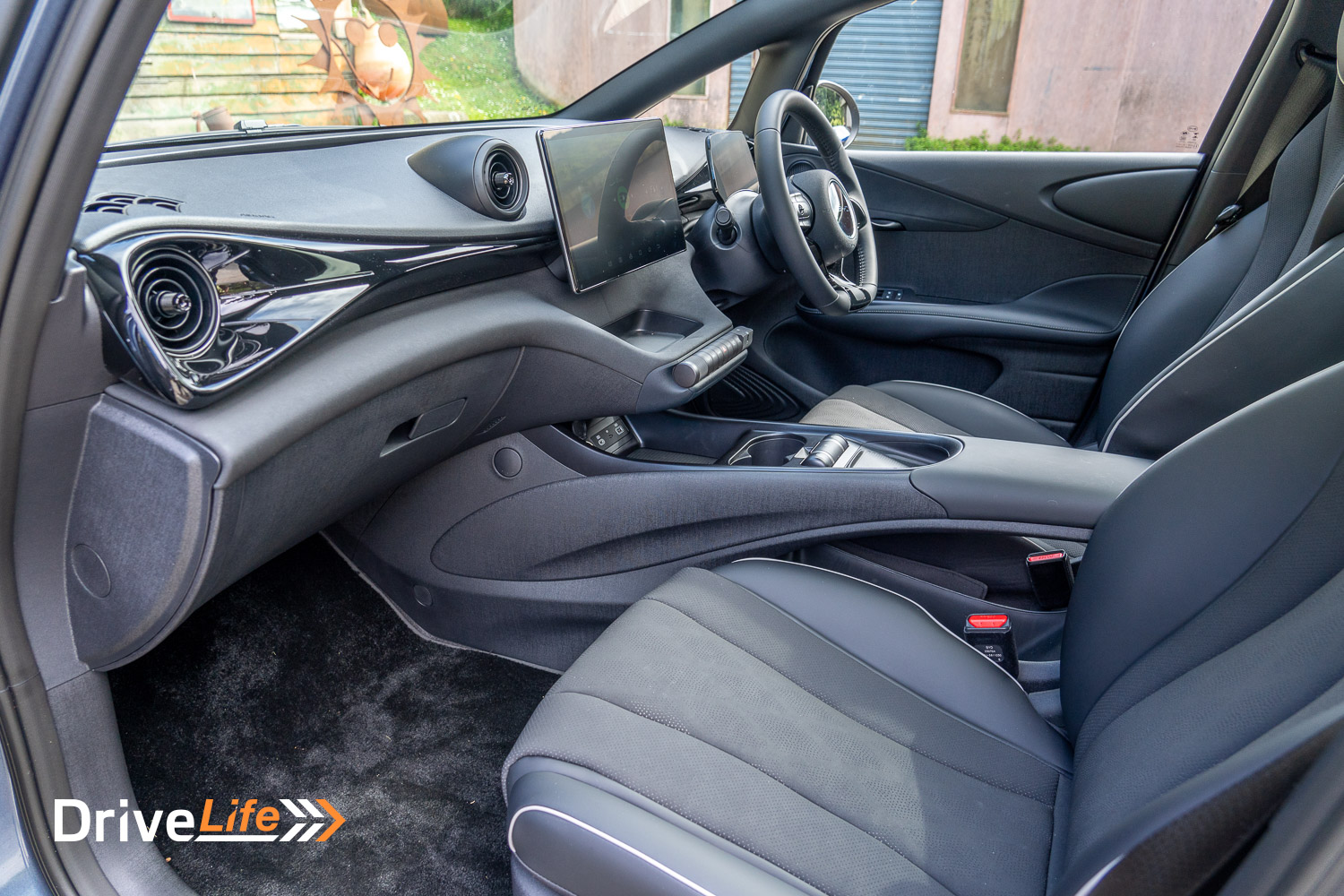
The seats look both luxurious and sporty; they are one-piece in design, again something we are seeing a lot of recently. This does mean rear-seat passengers can feel a bit more closed in, as the seats are physically bigger and restrict the view forward for those in the back.
Thankfully, the rear seat is not a bad place to be otherwise. It’s comfy and soft, and there are both USB-C and USB-A ports back there.
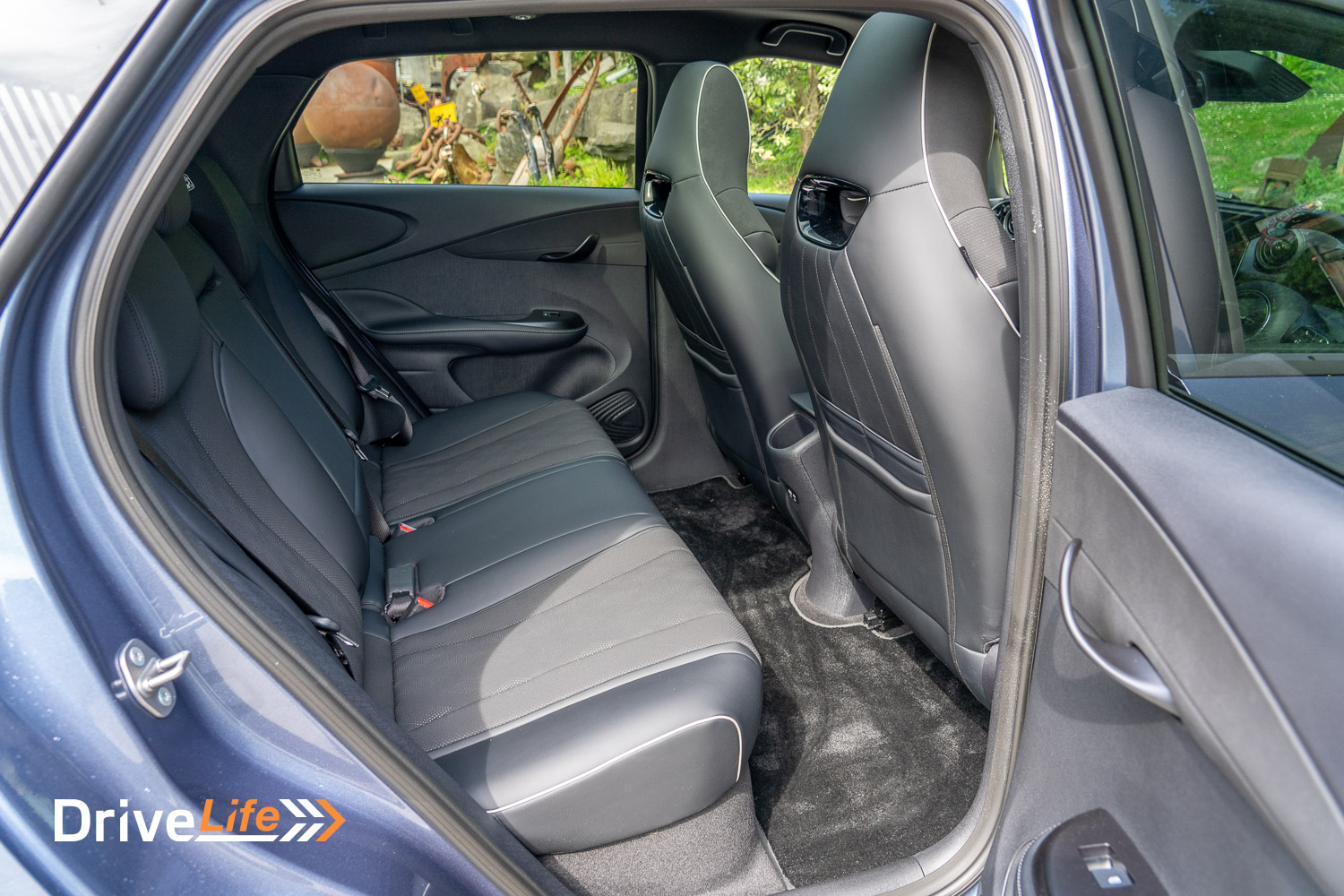
Front-seat passengers are well looked after as well, with a large glovebox and another smallish cubby to the right-hand side of the steering wheel. There are USB-A and USB-C ports at the front of the console, low down and under a sliding cover. There is also a 12-volt socket here.
While it looks like the console should have one, there is no centre cubby although there is some lower storage. At the rear of the lower storage area is something I have never seen as standard equipment in a car; a tool for either smashing the window in the event of going into water and the same tool has a seatbelt cutter on it. Kudos to BYD for including this as standard equipment.
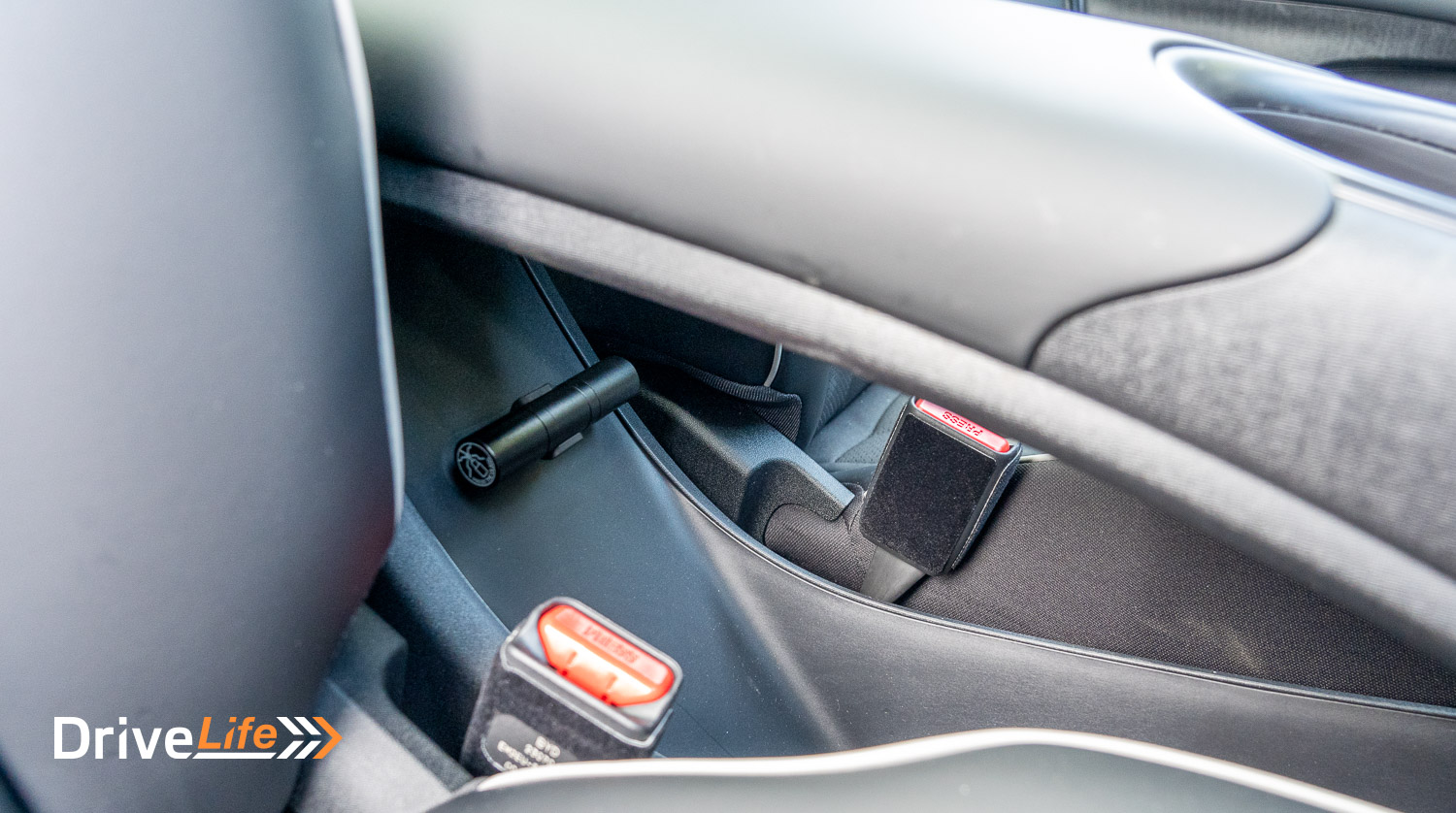
Speaking of storage, there is a large storage area right under the windscreen for loose items. It’s not a flat bin and not that deep, but it is pretty wide, spreading over 3/4 of the windscreen.
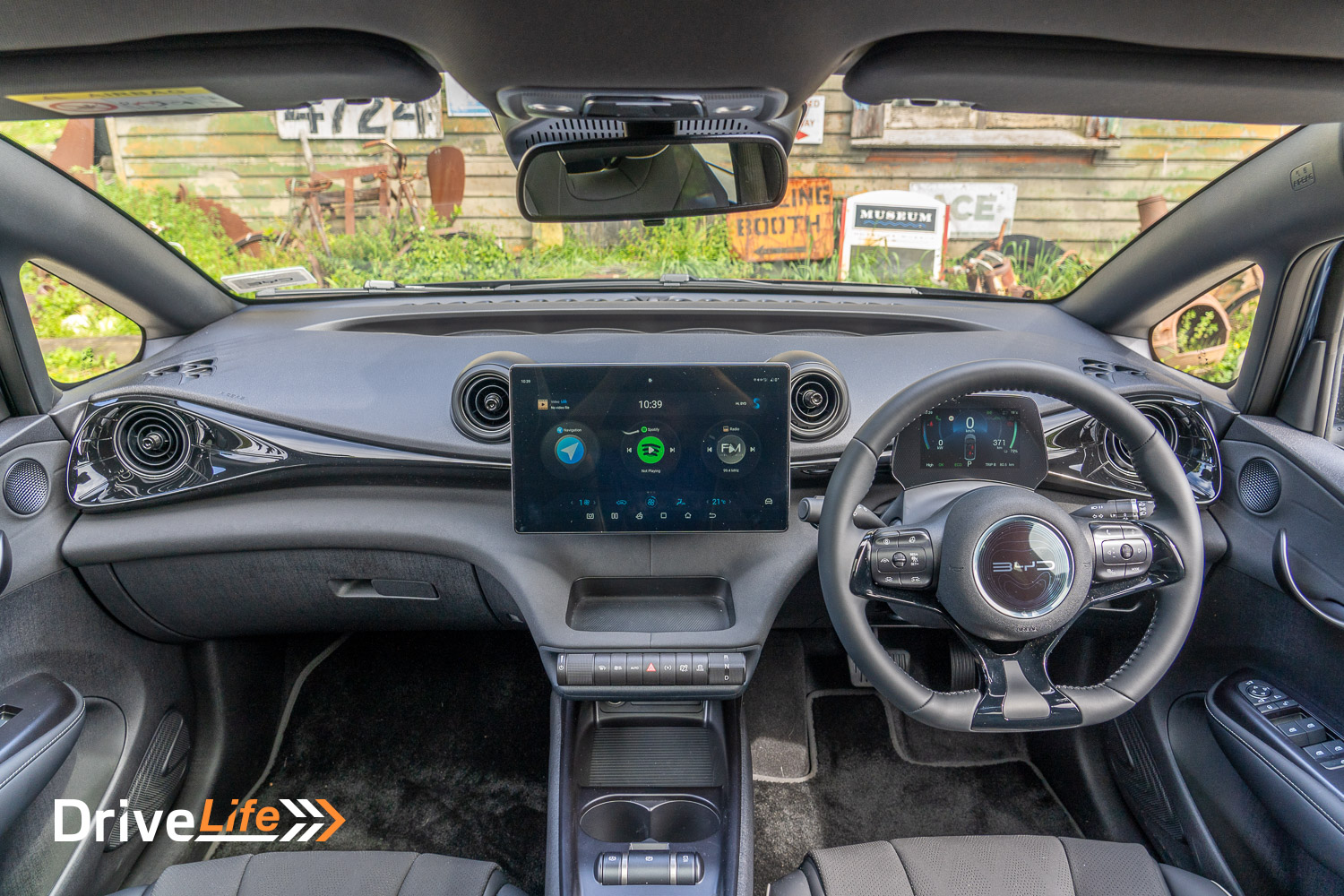
The upper rear of the centre console has a Qi wireless phone charging pad, easy to use and my phone never slid around and stopped charging – something we do see on other cars at times. It did feel a little odd having the Qi charger beside my elbow, and I had also seen this recently in the Opel Grandland – but it works just fine.
The boot is a reasonable size at 345 litres, and it’s a double-layer system, meaning you can carry taller items if needed. Handily, there are remote seat releases in the boot area.
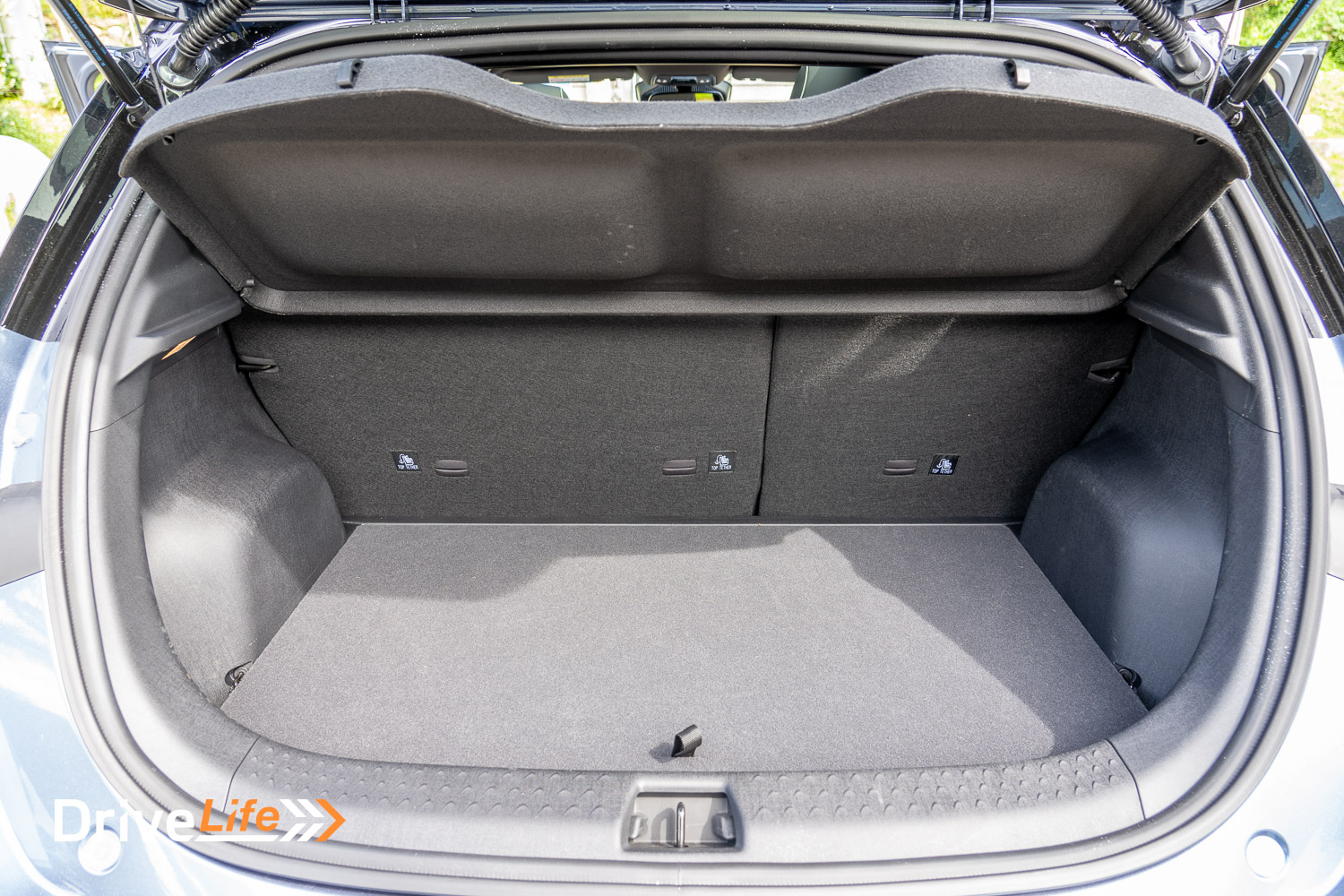
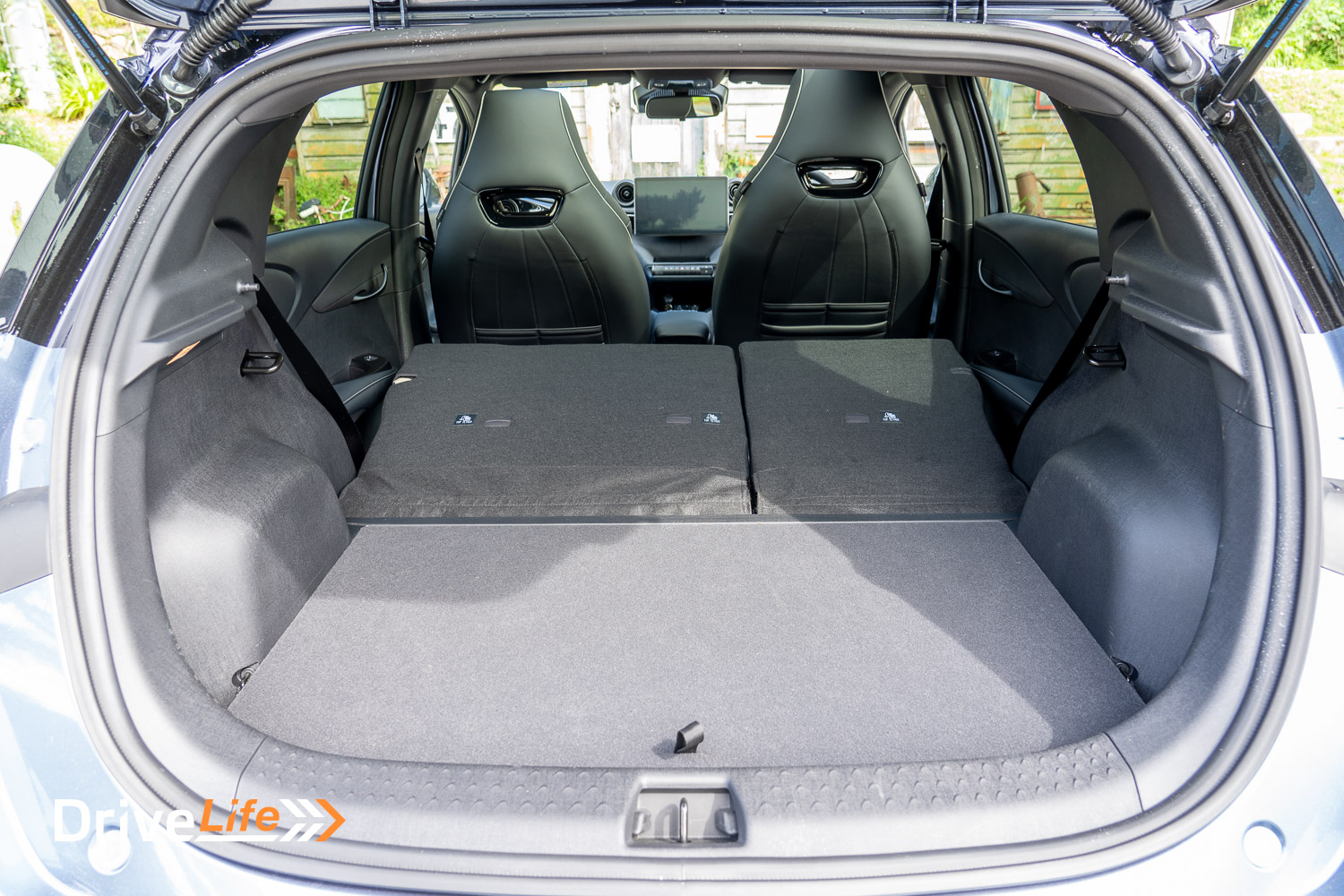
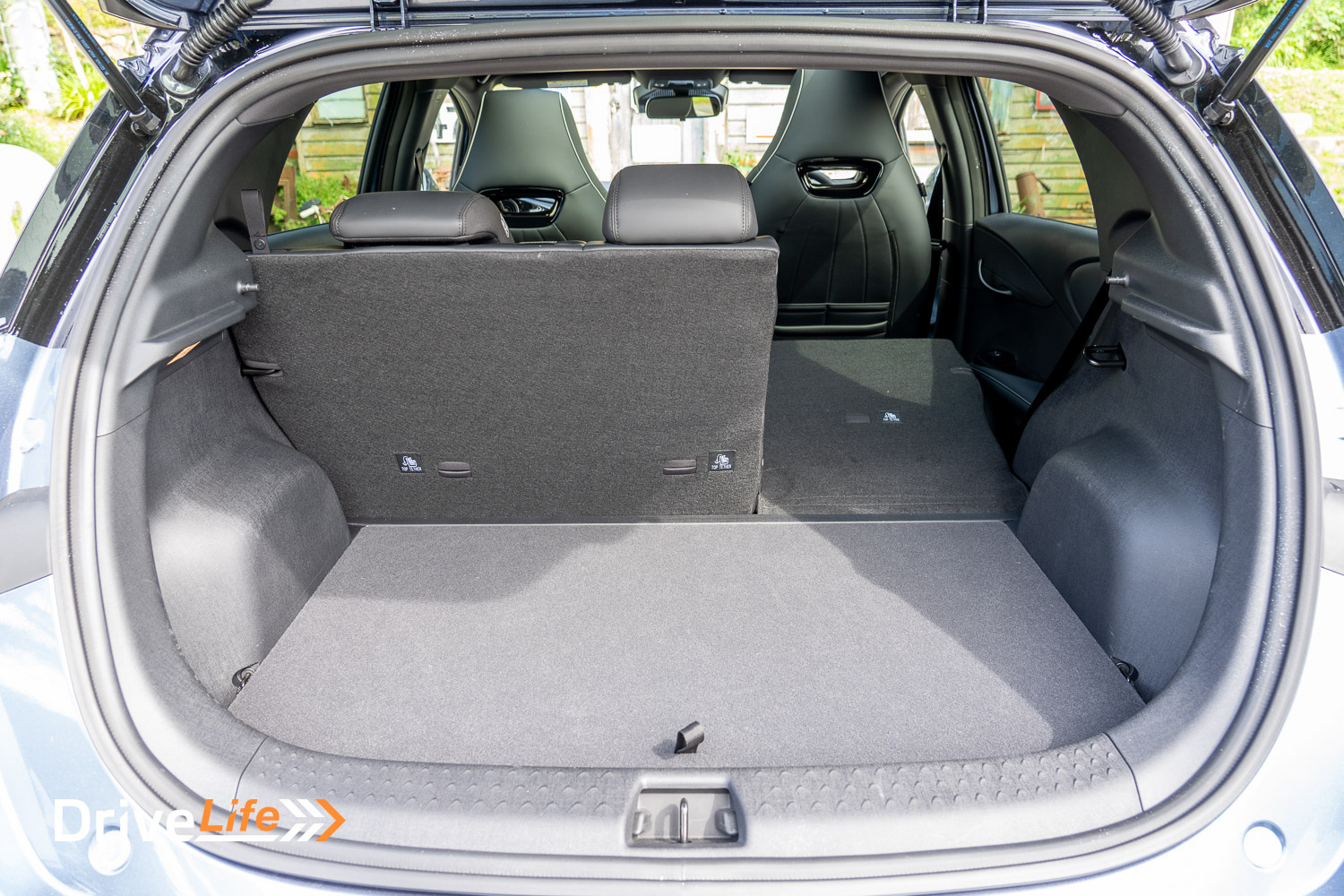
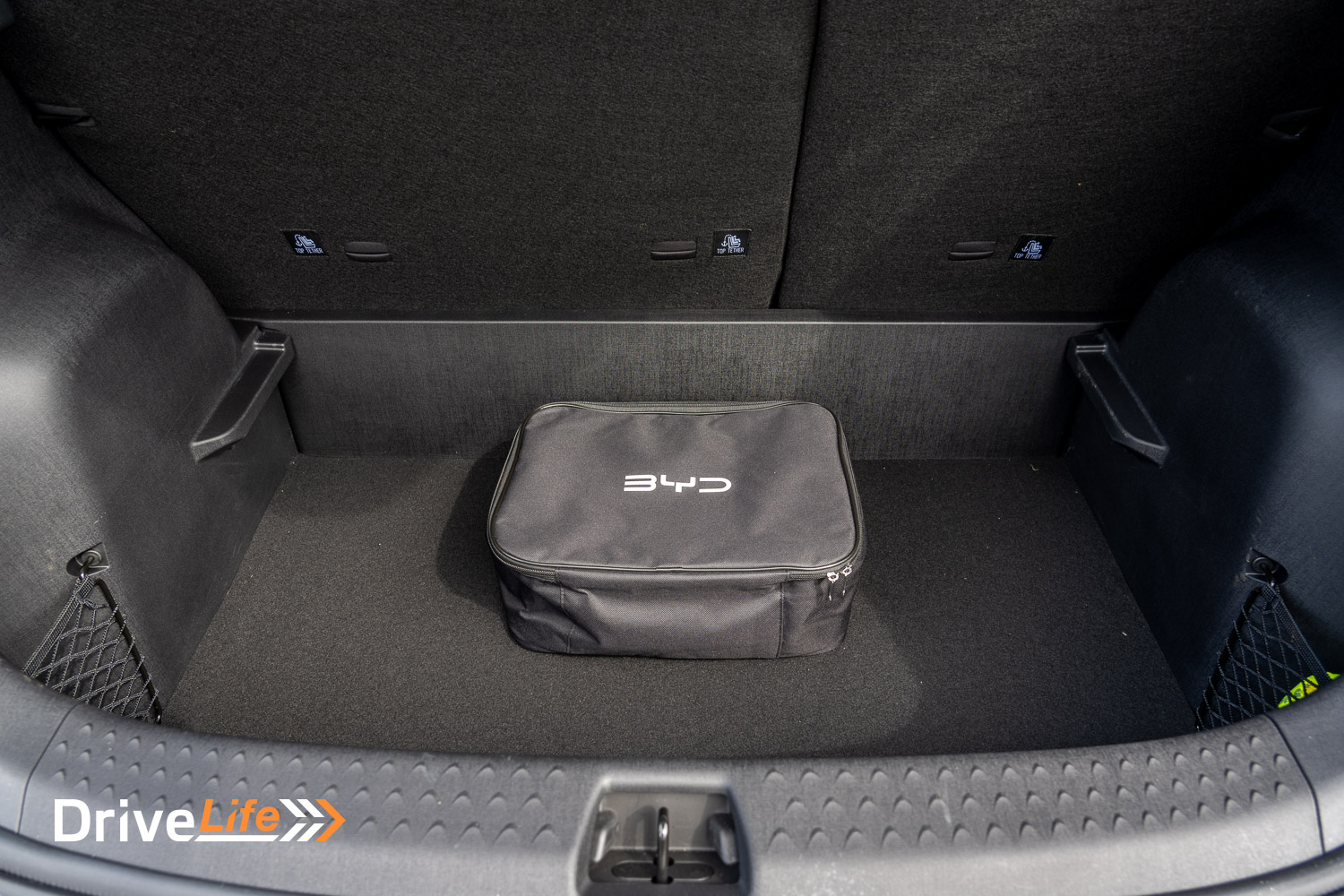
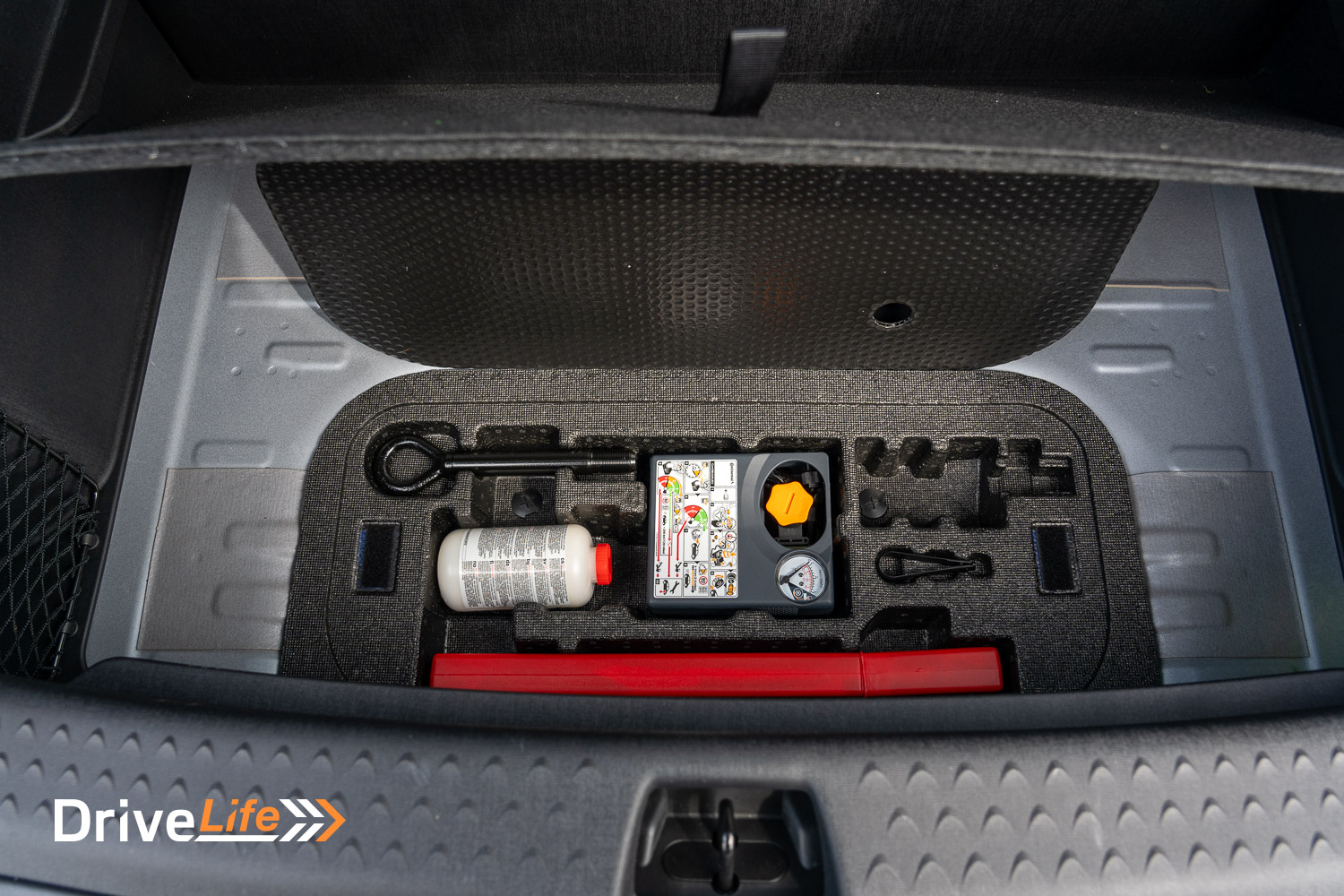
You might wonder about the quality of materials in the interior of the BYD but do not fear – it’s all very well put together. There is also a really nice mix of materials used, and in another first for me, even the hard plastics have a textured finish to the point where they don’t look like plastic at all. Very nicely done.
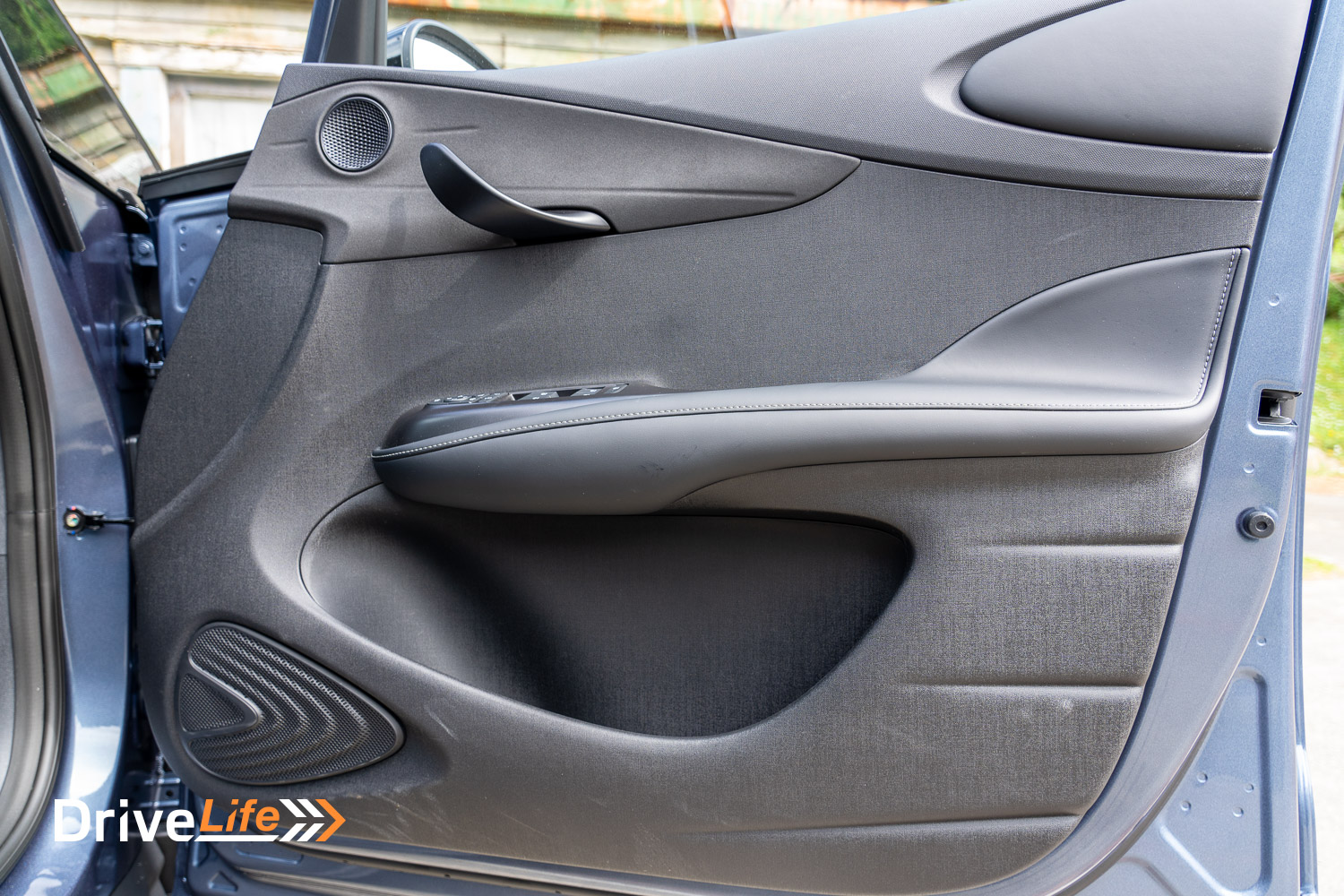
Sometimes it’s the little things that you really appreciate in the interior of any car, like the aforementioned tool for emergencies. But the other simple thing that caught my eye at night was the illuminated halo around the interior light switches. This seems so simple, but I have found in so many other test cars at night, that you have to just start stabbing at buttons to turn on an interior light. The Dolphin makes it simple.
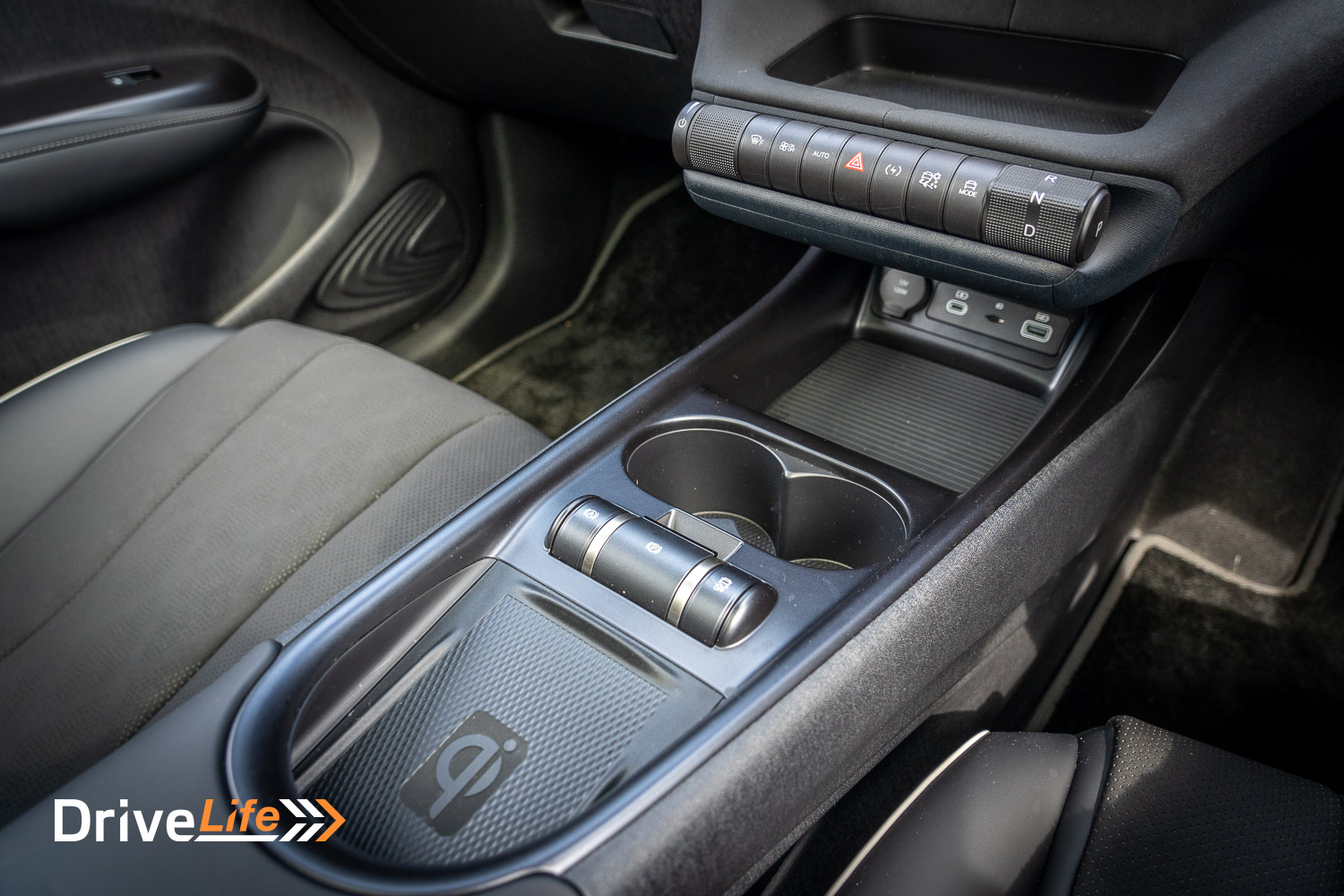
What’s The 2023 BYD Dolphin Extended Like To Drive?
On picking up the Dolphin, the dash was showing 475km of range at 100% charged. Would the Dolphin achieve that number? Read on to find out.
Since there were only 30 minutes between me getting out of the MG4 and into the Dolphin, I could gather instant first impressions. That first impression was around performance. While the 150kW Extended version of the Dolphin that we are testing gets to 100km/h in 7 seconds, it didn’t feel as punchy as the MG4 I had just given back.
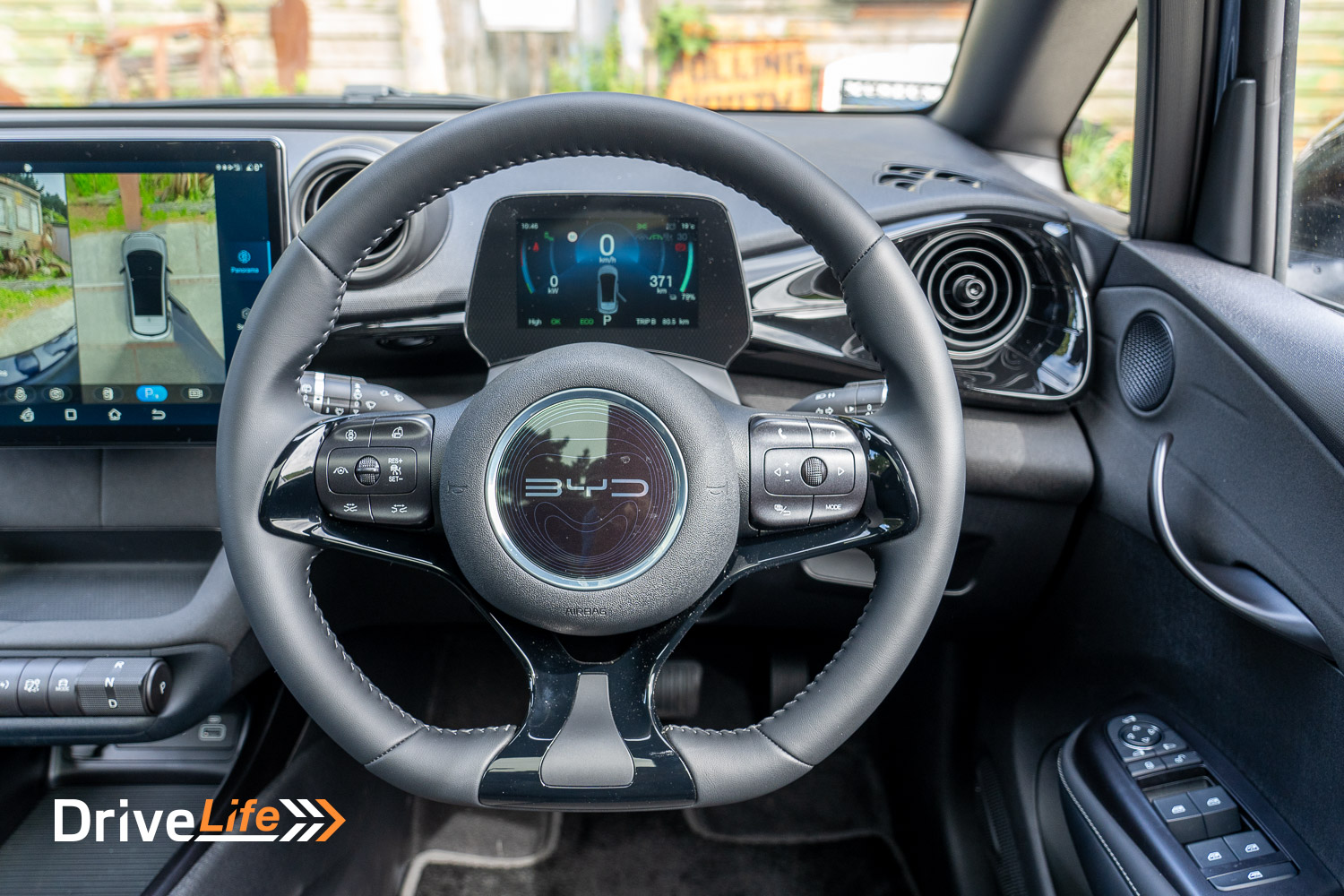
Part of this might be down to the accelerator pedal; it’s much harder to push down. You get used to it, but it gives the sense of lower performance than the car has. But in actual use, the car does move it nicely. You can spin the front wheels whenever you want, wet or dry, by planting the accelerator pedal, even at 50km/h. This does mean you do need to be a bit more careful in wet weather, and perhaps that’s where the hard-to-push accelerator helps out. I did spend a good amount of time in wet weather during my time with the Dolphin (no pun intended) and a number of times had to back off the accelerator pedal so the car could get traction back. Electronics will reign things in for you so there’s nothing to fear, but it can catch you out if you aren’t expecting it. Keep in mind I was pushing hard to see how quickly the car would break traction, so in normal circumstances, you might not see this at all.
With 150kW and decent performance, I’m not sure I could live with the Standard Dolphin, with its 70kW output. It’s so much less, that I expect with 4 people on board the car would struggle some. Still, we haven’t tested a Standard model yet, and it may surprise us.
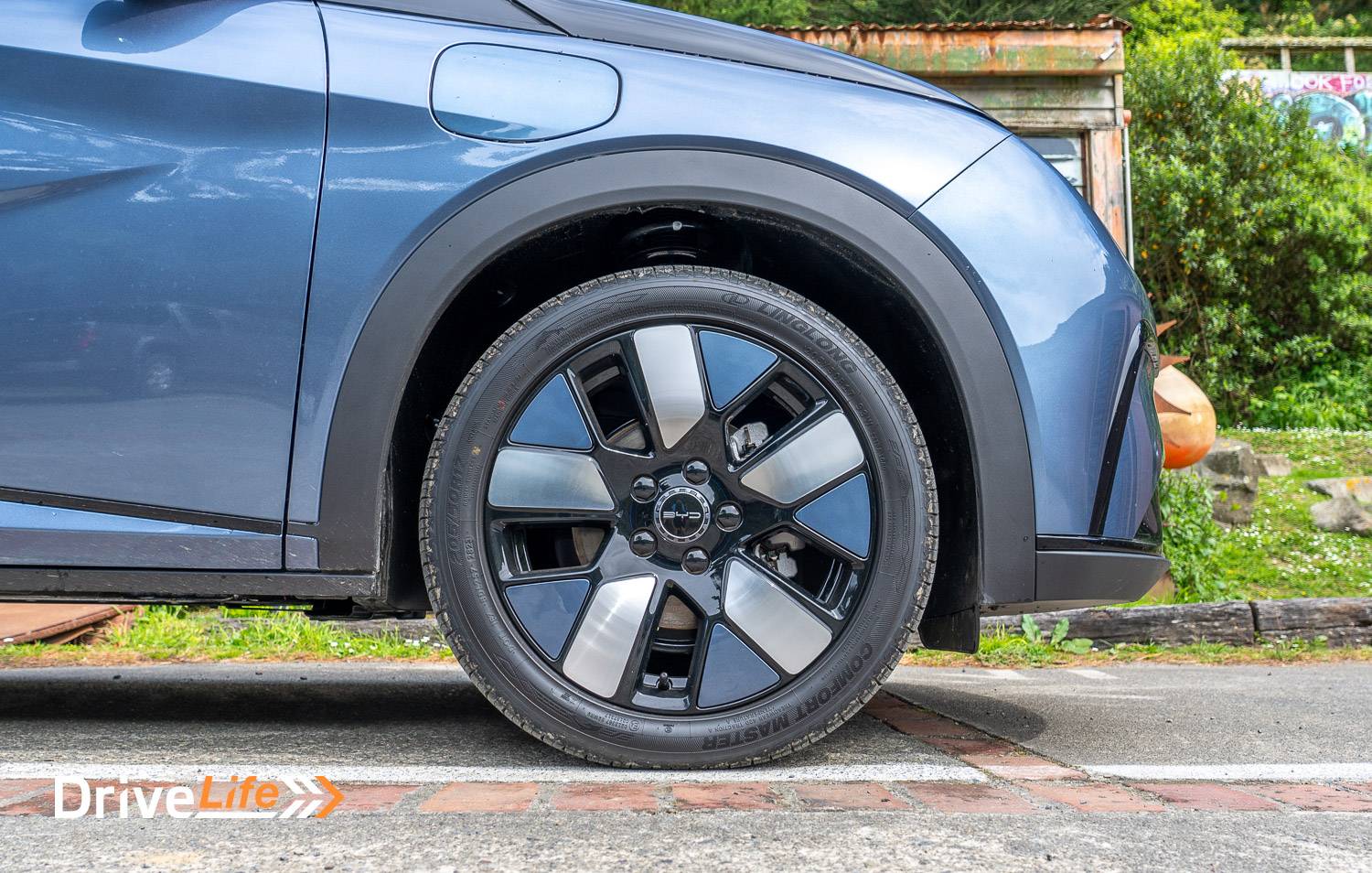
What about living with the Dolphin Extended, other than performance? Mostly good. On the motorway, there is just a hint of wind noise at the top of the A-pillar, but road and tyre noise are very well subdued. Even on coarse-chip seal, those Linglong Comfort Master tyres don’t sing too much and that’s generally where tyres are terribly noisy.
Visibility when driving is excellent and there is also Blind Spot Monitoring fitted. If you get too close to an object around town, the 360-degree camera will kick in automatically, giving you a high-resolution view of what you are about to hit (or what’s about to hit you). This is where the Dolphin has it all over the MG4; the resolution of the infotainment system and the 360-degree camera are outstanding. Not only the resolution of the cameras, but the huge amount of different views you can choose from is excellent. There’s even a transparent view, where you only see an outline of the Dolphin, so you can see what you are driving over. We normally only see this on AWD cars so I’m not sure of its usefulness in the Dolphin, but it has it.
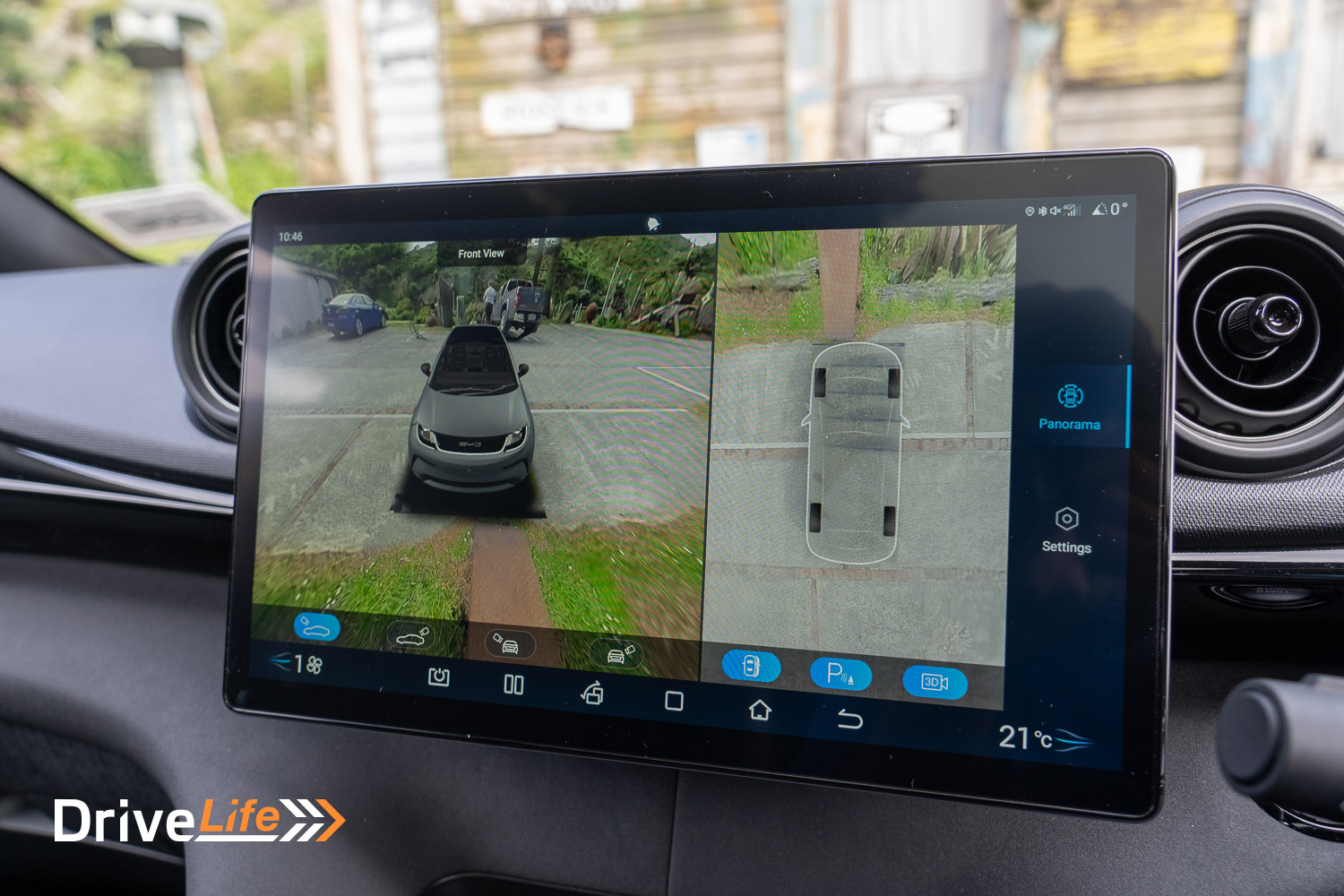
Like in the Atto3, you can hit a button on the steering wheel to make the centre screen rotate, so you can have the huge screen set to portrait or landscape mode, depending on your personal preference. Speaking of personal preferences, there are 6 themes to choose from for your Dolphin’s infotainment system.
Another bonus here is the button to get the 360-degree camera on manually; the button is right there on the steering wheel, where you can get to it in a hurry. The MG4 hides it away in the infotainment system screens, which is not ideal.
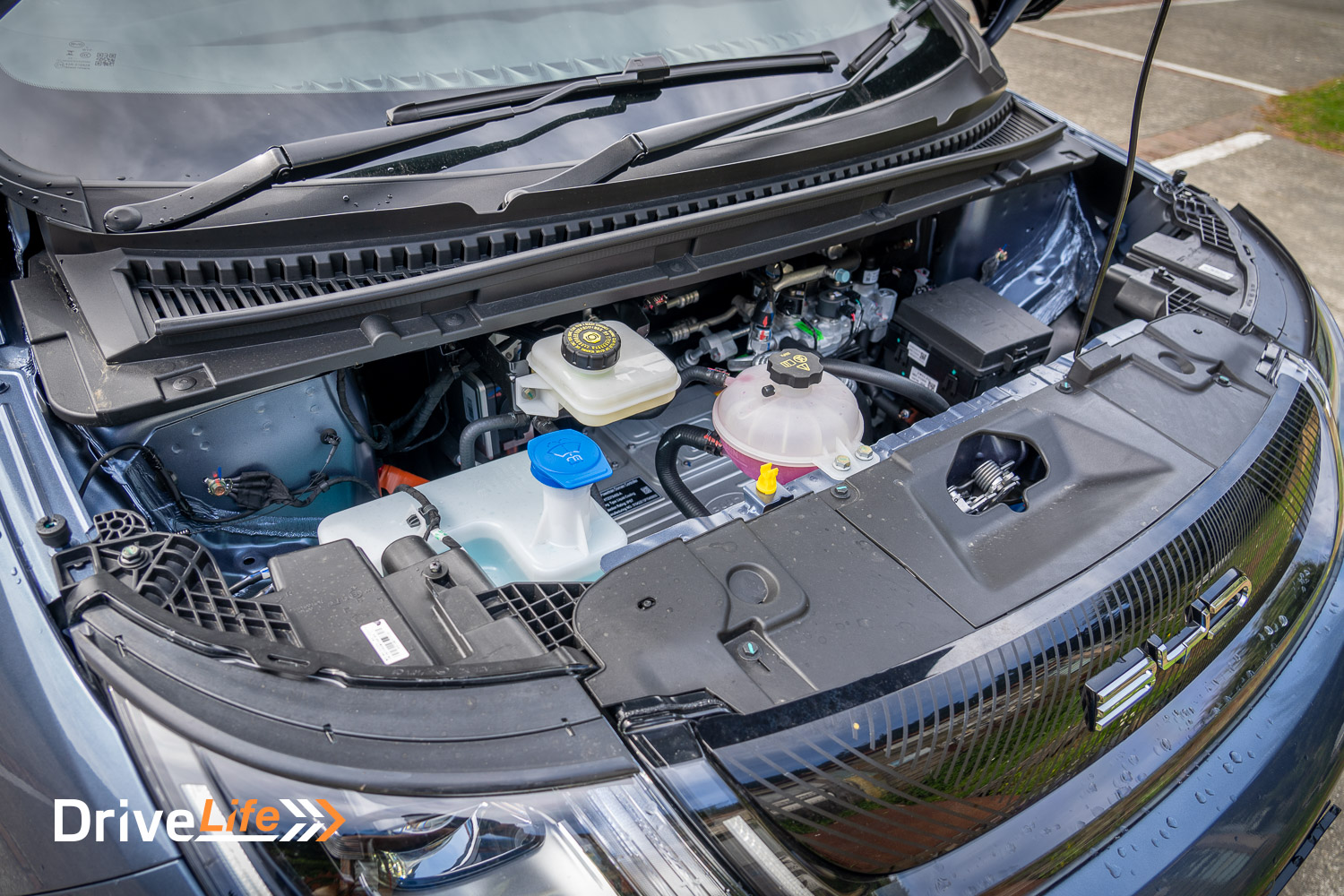
That infotainment system is also far faster between screens, blitzing the MG4 in this area. The screens basically keep up with your finger swipes, which is how it should be. Well, almost keeps up with your finger, as I found. Long story short, the Dolphin has a speed alert system, which is fine. But it’s quite keen on alerting you, and also it’s tied of course to traffic sign recognition (TSR). But the TSR on the Dolphin is not too reliable, meaning you get speed alerts when you aren’t speeding, sometimes. Normally I’d just turn off the speed alert, and you can, but you have to disable traffic sign recognition to stop it.
That’s also fine if that’s the way it works, but to turn off TSR you have to pull down from the top of the centre screen to get to the option to turn it off, and often pulling down just did not work. I’d have 2 or 3 goes before the options came up. Then of course, once you restart the car TSR is back on and if you want to turn off the speed alert, you have to try pulling down on the screen again.
There were some other glitches I found, like the voice commands. Going into the menu system to find help with voice commands, I should be able to say, “Hi BYD. Close the sun shade.” But on doing this, I was told “I can’t do that yet”. Weird. There were some other voice commands that I should have been able to use (they were in the help system) but didn’t work. But the voice command does well at other times. Simply saying “Hi BYD. I’m too hot” will get the car to reduce the temperature, meaning less distraction of pushing buttons and going into menus.
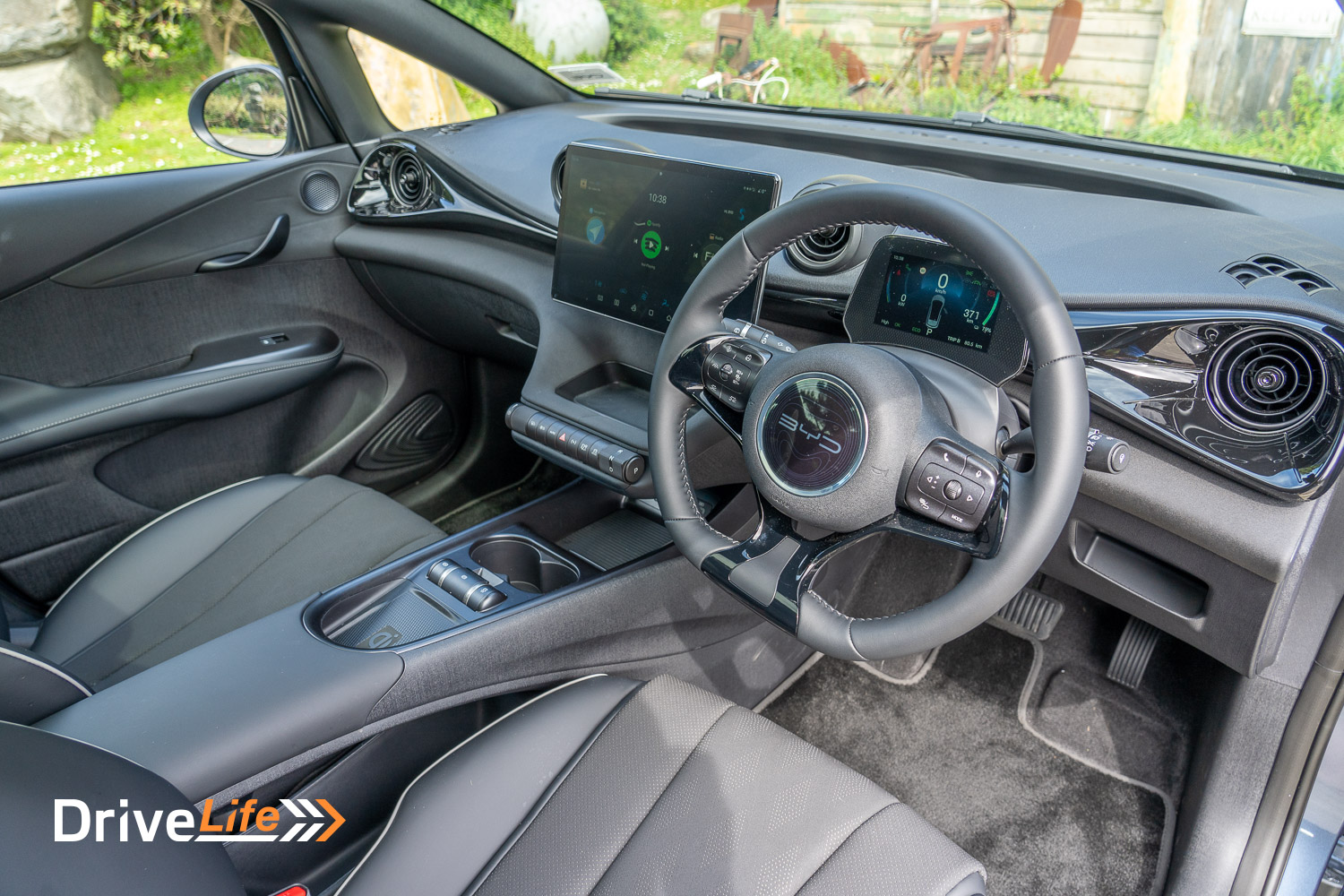
Back to driving the Dolphin. The car has different options for driving, and there is a plethora of menus you can cycle through on the main screen. I honestly don’t think I found them all. One of them allows you to change the steering feel from Comfort to Sport, but I didn’t notice much difference. Ditto for Brake Assist; you can pick from Comfort or Sport, but again, it didn’t feel any different to me. The Comfort Parking option does lighten up the steering at lower speeds, and highlights another great feature of the Dolphin; the turning circle is awesome, and it’s a breeze to drive the car through tight city streets.
On the EV side of things, there are options for this too; one of those is adjusting the brake regeneration, with two settings to pick from: Normal, or High. However, even on High, the brake regen is nowhere near as powerful as the MG4. There is some regen there, but you are almost coasting. There is no one-pedal mode like the MG4 has, so you are going to be using the brake pedal quite a bit. This isn’t the end of the world as you will still get some regeneration (i.e. free charge) going into the batteries when braking, but it’s still a loss of efficiency. There are no regen paddles in the Dolphin.
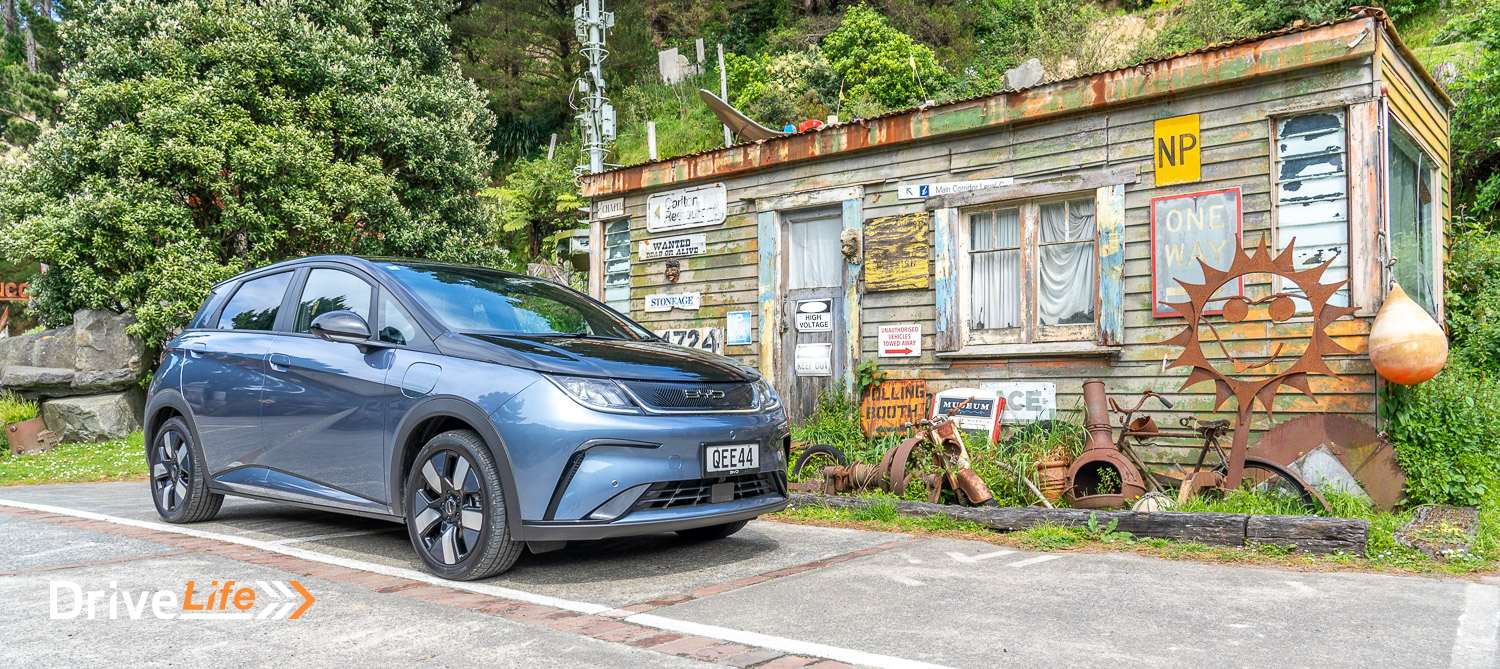
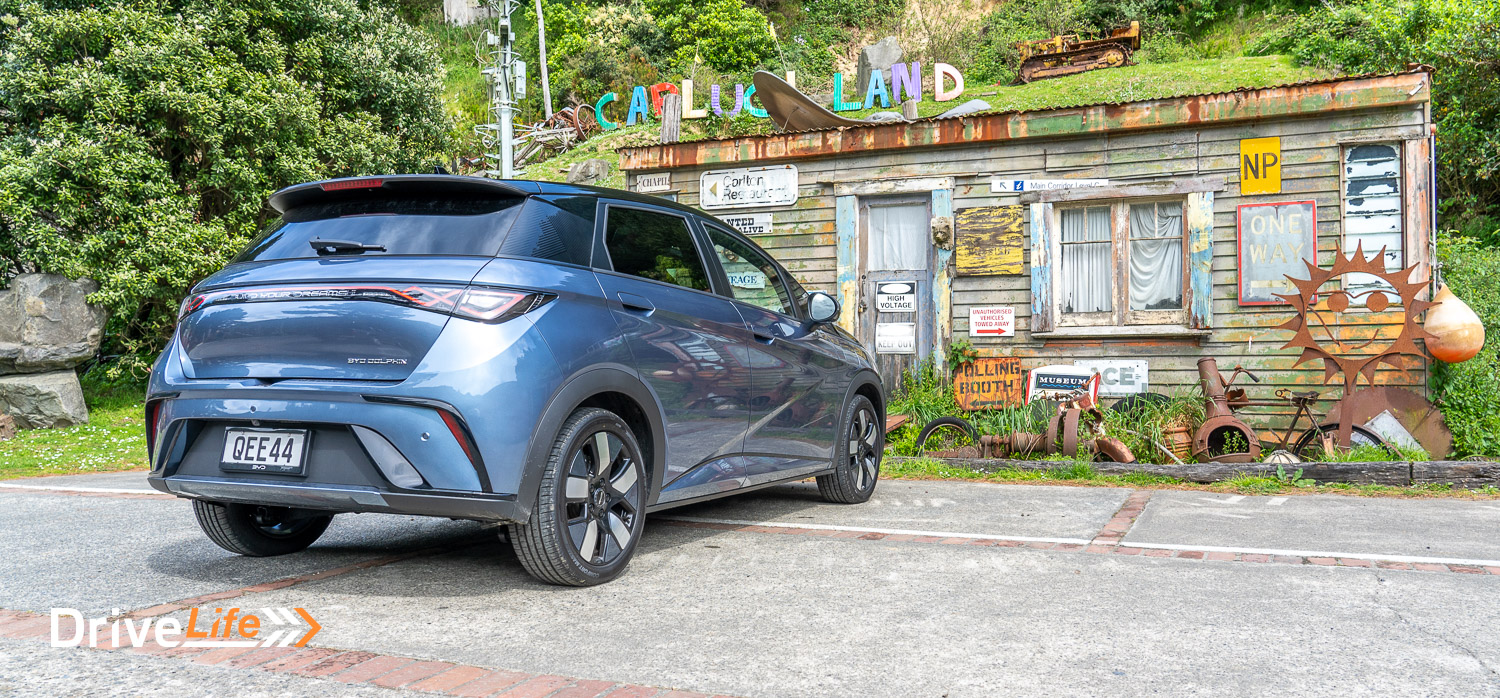
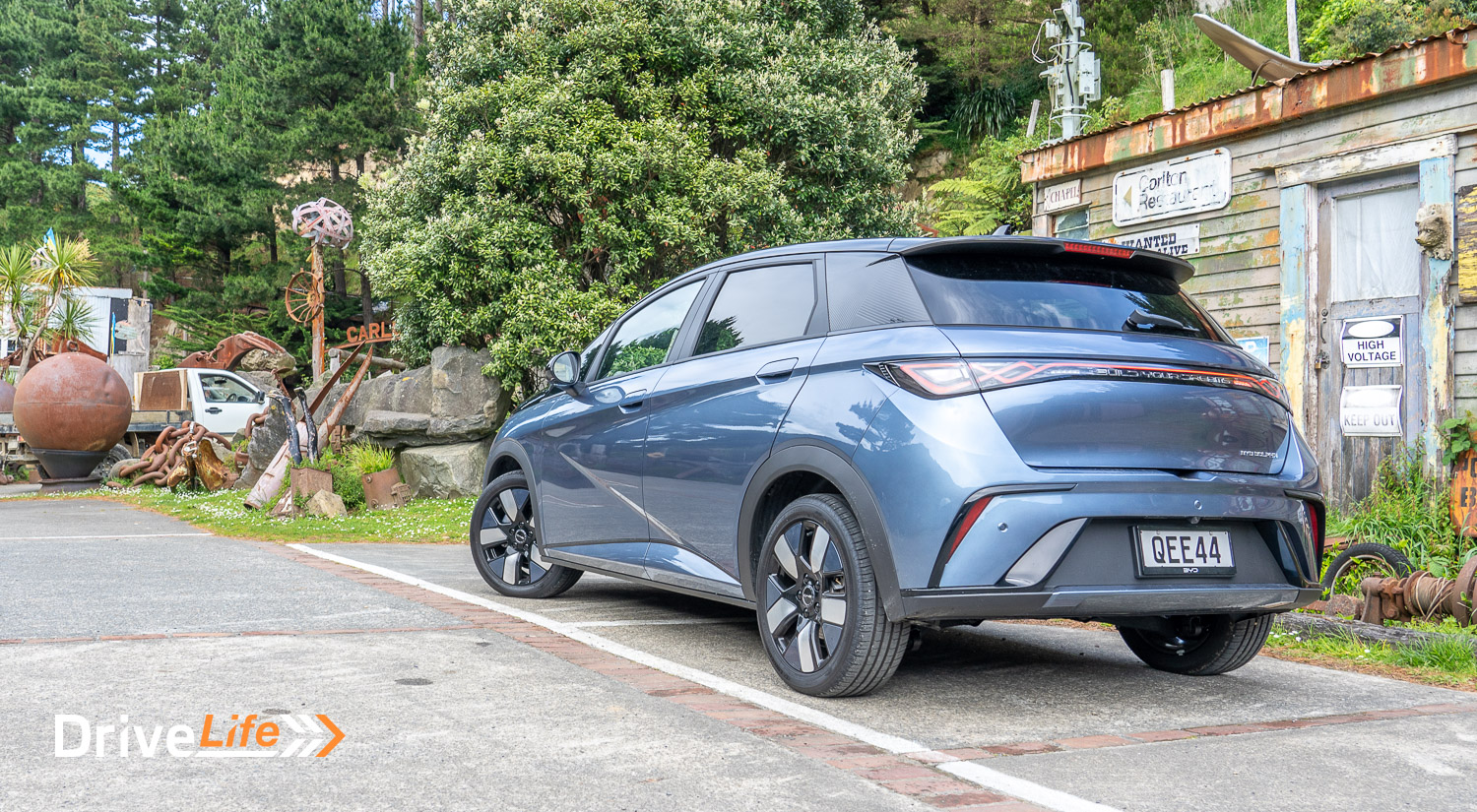
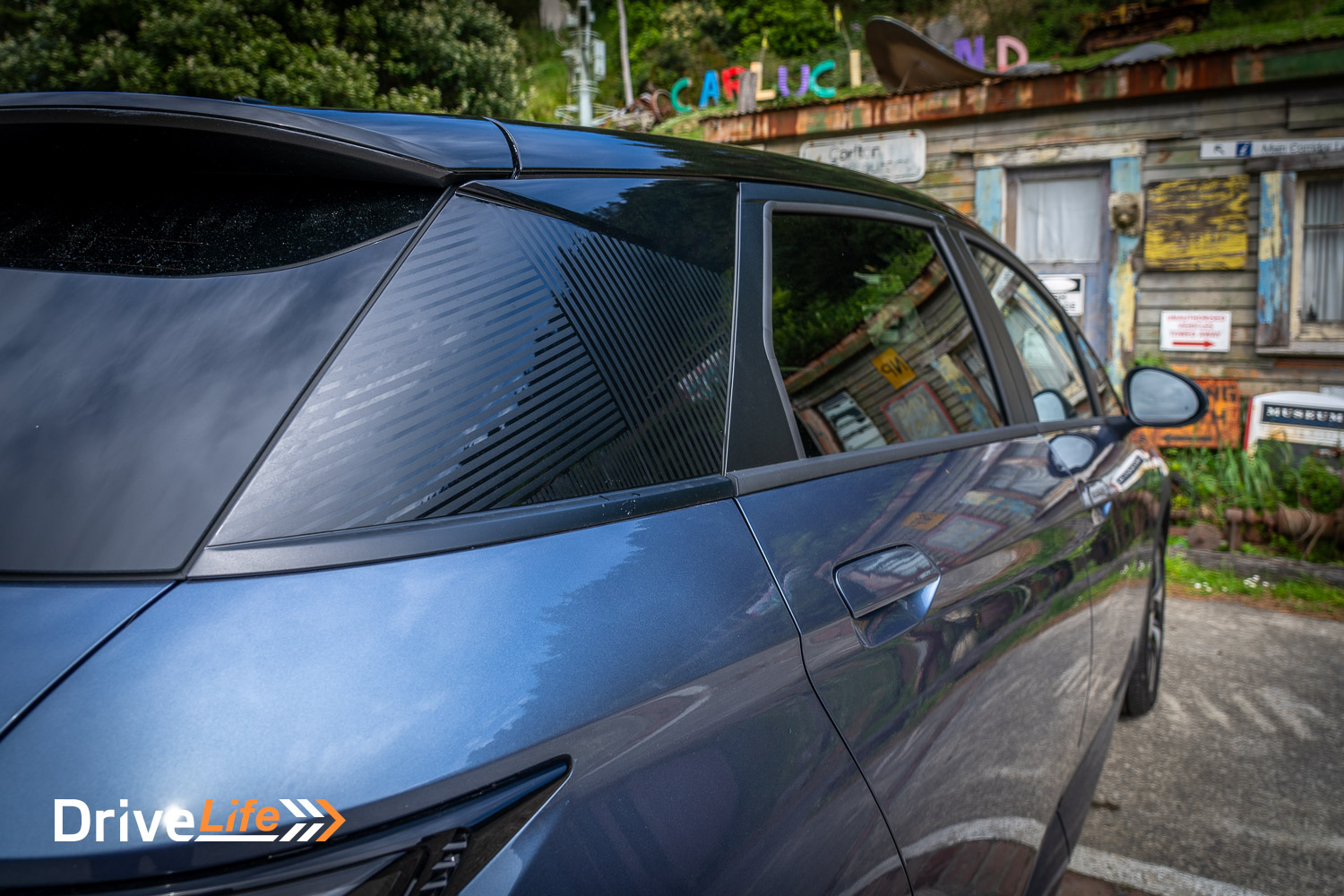
Regardless of the brake regen, the Dolphin is generally pretty easy to live with as a Daily Driver. The dashboard has nice, normal bullet air vents. These are an old but effective design – they just work. All the electric windows are auto up/down, something I always note and appreciate. On the negative side of things, if you want to turn on the front seat heating, you’ll need to go through the menu system to find it – but of course you can use voice commands. If there was one other slightly annoying thing, it’s that the passenger’s door doesn’t have a lock/unlock button on it, so if you are on that side of the car, you’ll need to dig the keyfob out of your pocket. Yes, I know, first-world problems but if you’ve just grabbed a load of stuff off the passenger’s seat, you’re in danger of dropping something while hunting in your pocket for the key.
Ride quality on the Dolphin is excellent, although it can feel a little floaty at times. Overall, it’s ahead of the rest of the class in this respect and on par with the MG4. Adaptive cruise control will bring the car to a stop, the chunky flat-bottom steering wheel feels fantastic, and the dashboard is crystal clear. The steering wheel controls work just fine – nothing to complain about here which is always a bonus.
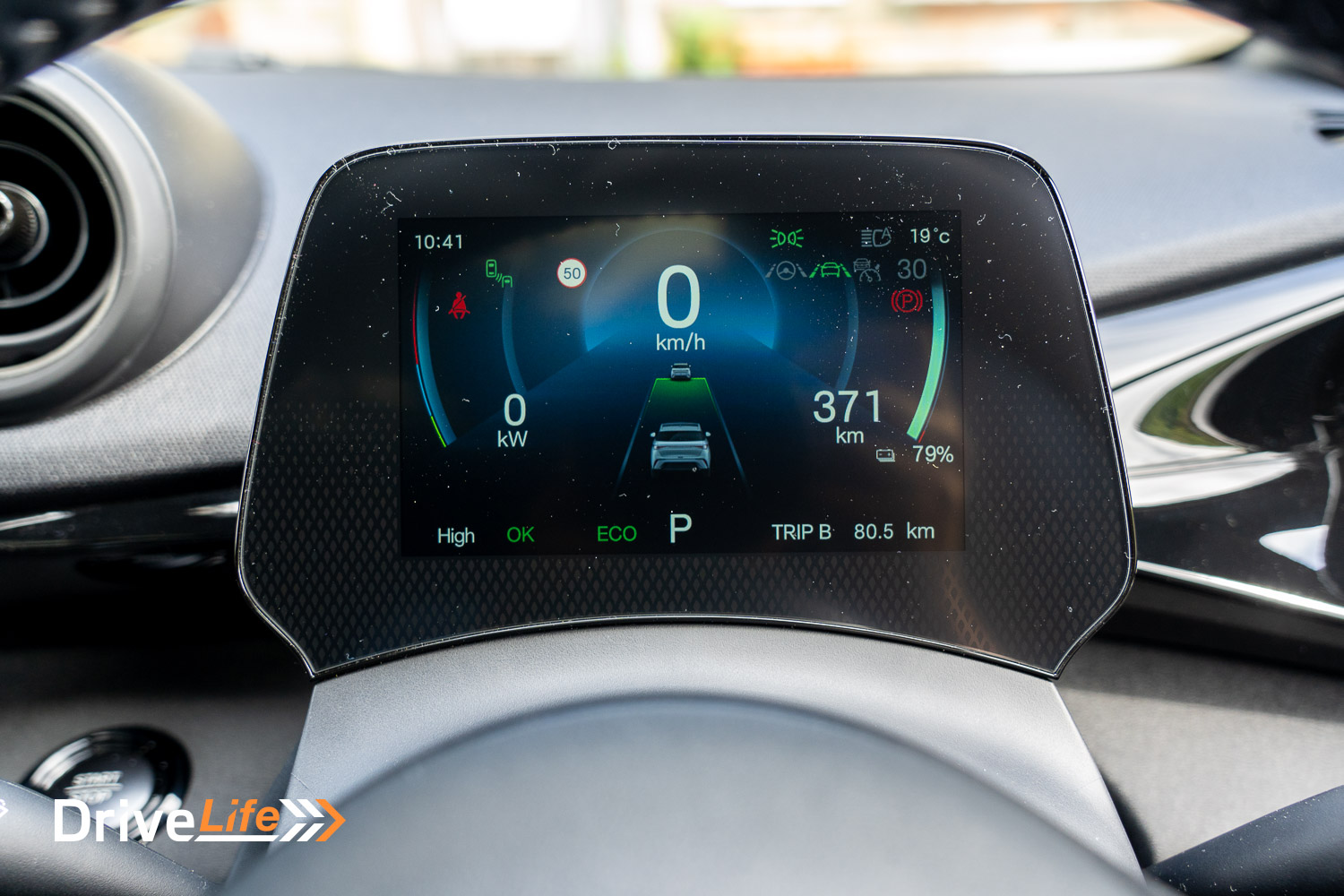
Like other cars we are seeing lately, the Dolphin has a digital dash with no hood over it. You would think that sunlight would blitz the screen making it unreadable, but that just doesn’t happen. The info on the Dolphin’s dash is clear and crisp, and only the info you need is given there. It’s nearly perfect.
To change gear in the Dolphin, you will need to use the gear selector which is a knob on top of the dashboard. It might feel a little strange if you aren’t used to it, but after a day it becomes second nature. You push the centre of the knob in to put the car in Park.
I’ve mentioned a few small glitches our test car had, and there were some others. The Dolphin has brake auto-hold, something that I use all the time, but it would turn itself off randomly. Also, when using SatNav the routes suggested were way out there, sometimes telling me I should do a U-turn and head back the way I came, and then stop at some random point. I’m sure such things will be fixed with updates.
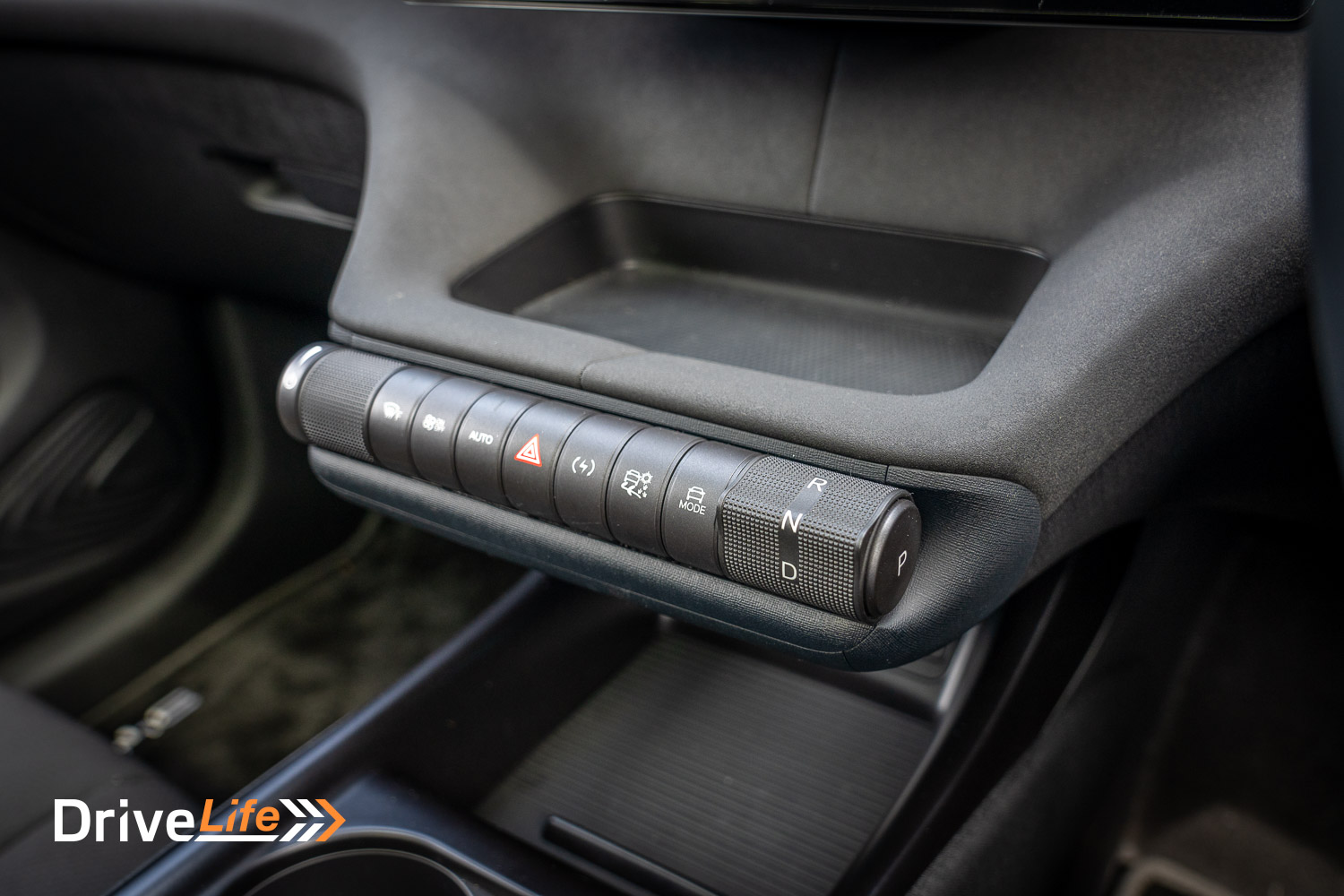
I guess for me, the biggest glitch I had with the Dolphin was around the Lane Keep Assist (LKA) function. There were times when I was turning right and had a flush median to drive over, with my indicator on. The Dolphin would try and force me to go back into the lane, thinking I had wandered out of it. But my indicator was on and I wanted to turn. The car was quite forceful in wanting me to drive straight and I had to fight the steering wheel to stop that happening. Lane Keep Assist can be a great safety feature, but if your indicator is on, it should turn off. This is one problem that I could understand why the Dolphin didn’t make it into the top ten finalist list for Car Of The Year. It really needs to be sorted out. You can turn LKA off, but because of ANCAP regulations, it will turn itself back on when you get back into the car.
Although our test car didn’t come with one, unlike the MG4 the Dolphin comes standard with a Vehicle to Load (V2L) adaptor cable. That means if there’s a power cut or perhaps you are out having a picnic somewhere, you can plug household appliances into your Dolphin and use the battery pack to power your appliance. You can draw up to 3.3kW of power, which is a relatively large amount – easily enough to boil a kettle. Kudos to BYD for supplying this cable for free with the car.
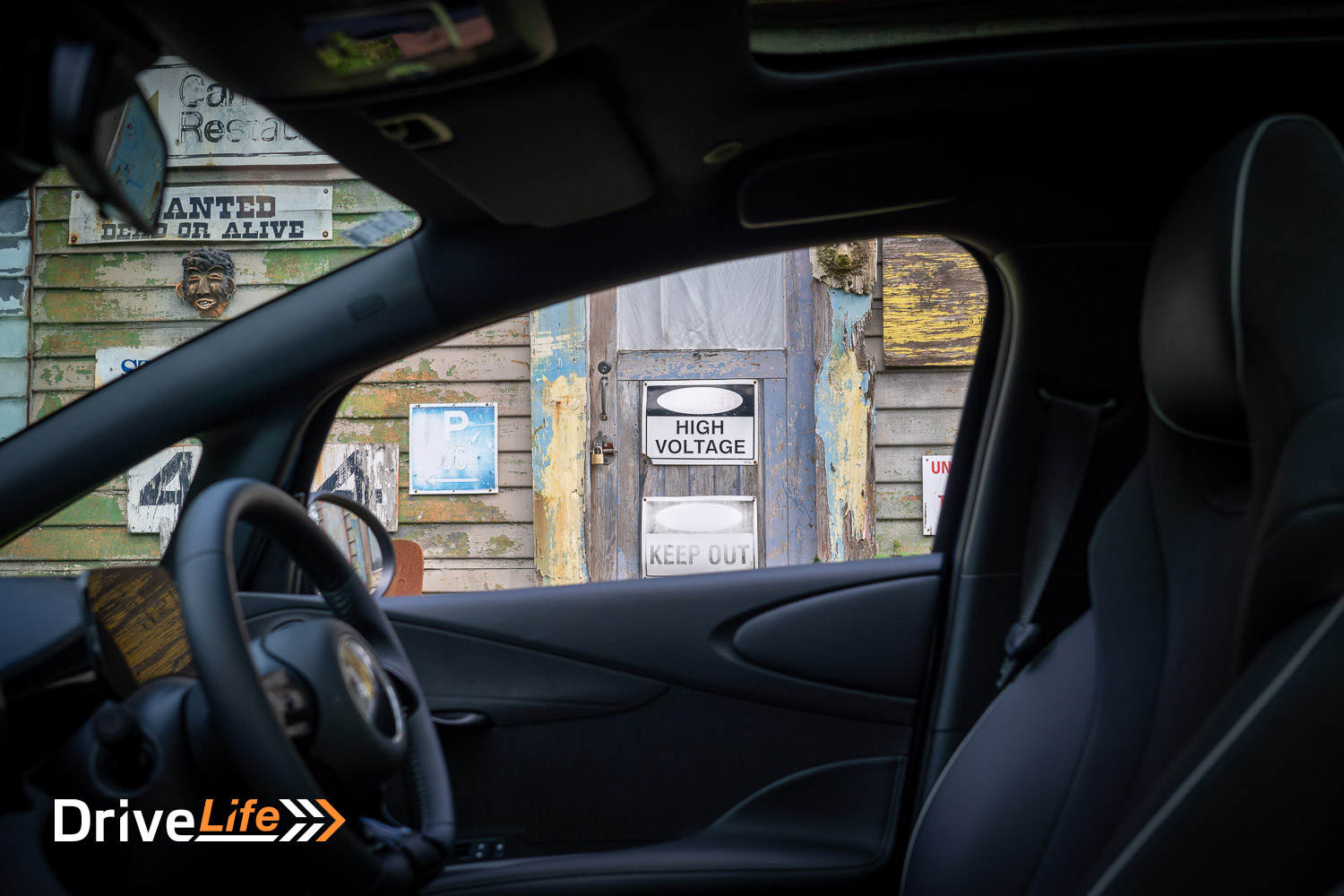
BYD pushes the advantages of their blade batteries often, and both the Dolphin and Atto3 have a blade battery. In fact, BYD sells blade batteries to Tesla for their Model Y that are produced at some of their Gigafactories. So – what are they? If you want some low-level tech talk, a blade battery uses lithium-iron-phosphate (LFP) as the cathode material, which offers a much higher level of safety than conventional lithium-ion batteries. LFP naturally has excellent thermal stability and is substantially cobalt-free. LFP is also a very durable material. A blade battery is also longer and flatter, meaning you can get more of them into a car’s frame.
BYD claims that with the better efficiency of their blade batteries, the range of the car is extended and charging is faster. It’s also safer than a lithium-ion EV battery, as you can see in this video:
Not that we’re all going around stabbing EV batteries with a nail, but in a crash situation, a blade battery should be safer.
BYD claims the Dolphin Extended should get around 427km on a single charge. I managed to drive the Dolphin Extended for just 315km, far less than my usual. The car was used for general commuting duties and was handed back with 315km driven and 76km left to go, for a real-world range of around 391km.
Energy economy was bordering on outstanding, at 15.3kWh/100km. To compare, we recently reviewed the MG4 Essence and it returned 16.8kWh/100km (review yet to be published).
Thanks to Carlucciland for the use of their location.
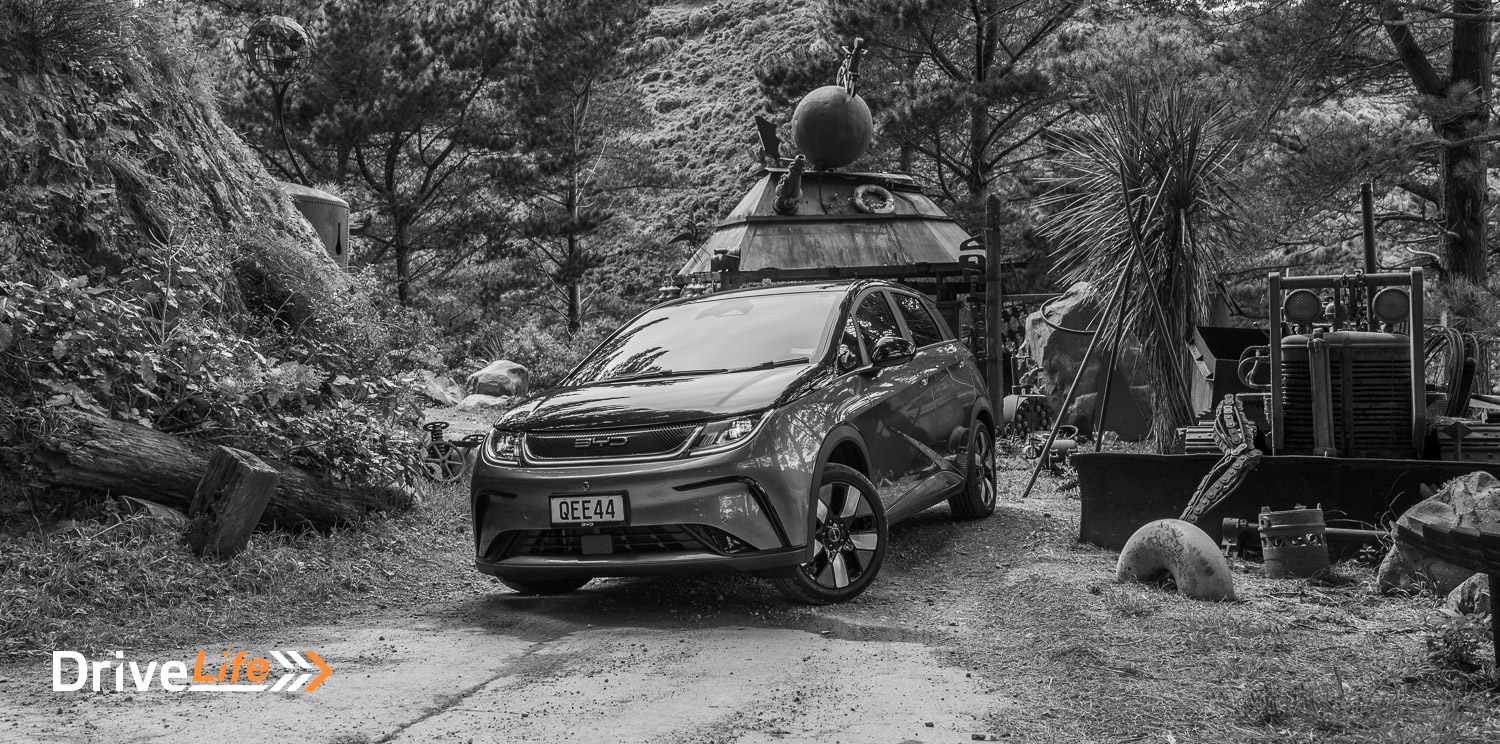
2023 BYD Dolphin Extended – Specifications
| Vehicle Type | Front-wheel drive, 5-door EV Hatchback |
| Starting Price | $55,990 |
| Price as Tested | $55,990 |
| Engine | Electric |
| Power, Torque kW/Nm | 150/310 |
| Transmission | – |
| Spare Wheel | Tyre repair kit, no spare |
| Kerb Weight, Kg | 1,658 |
| Length x Width x Height mm | 4290x1170x1570 |
| Boot Space / Cargo Capacity, Litres (seats up/seats down) | 345/1,310 |
| Energy Economy, kWh/100km | Advertised Spec – Combined – 15.9 Real-World Test – Combined – 15.3 Low Usage: 6-10 / Medium Usage 11-19 / High Usage 19+ |
| Turning circle metres | 10.5 Small: 6-10m / Medium 10-12m / Large 12m+ |
| Warranty | 6-year/150,000km* warranty 8 years of roadside assistance EV Battery warranty of 8 years/160,000kms* *Whichever occurs first. The warranty is fully transferrable to subsequent owners. Battery and Vehicle Warranty terms, conditions and exclusions apply. |
| Safety information | ANCAP Rating – 5 stars – Link Rightcar.govt.nz – 5 Stars – QEE44 |
Have you enjoyed this review? Be sure to join our monthly email newsletter list so you don’t miss a single car review!


